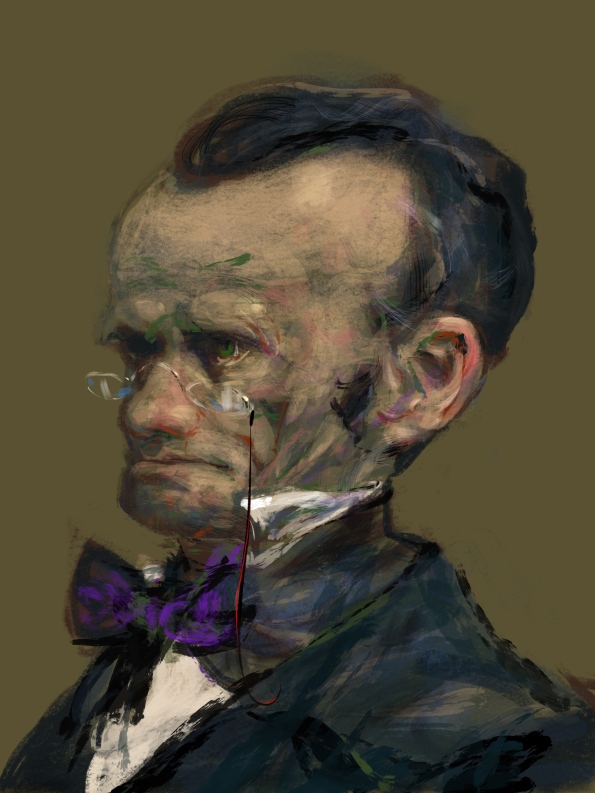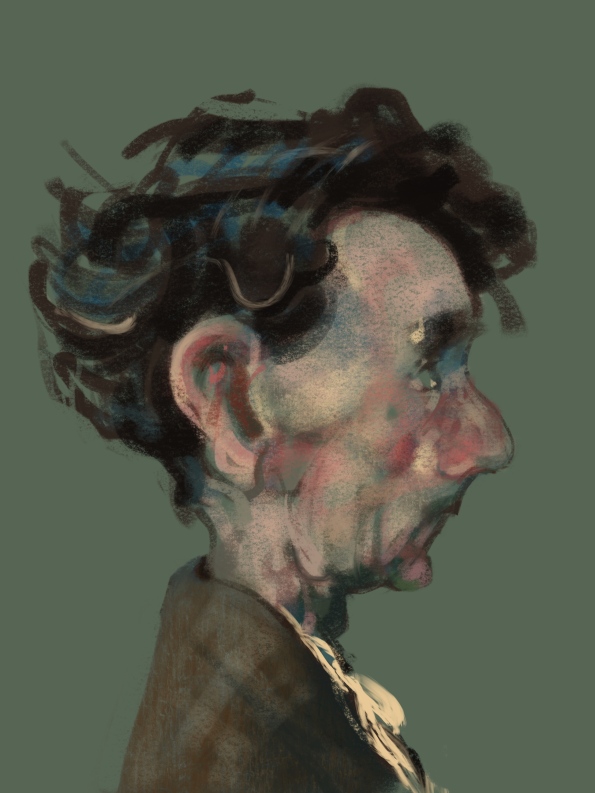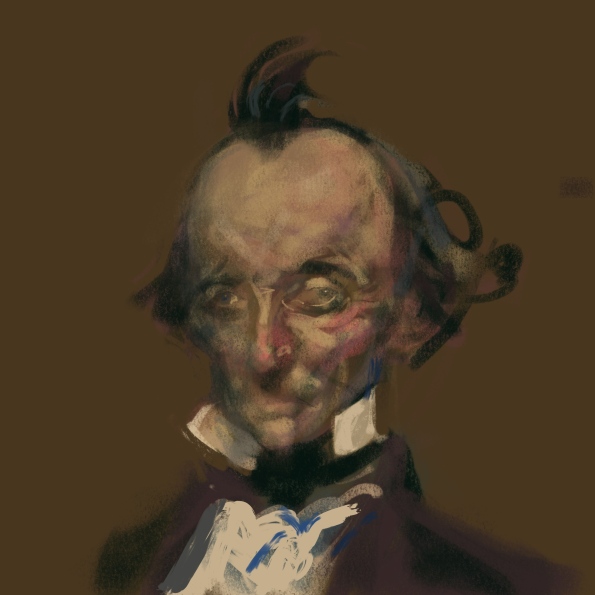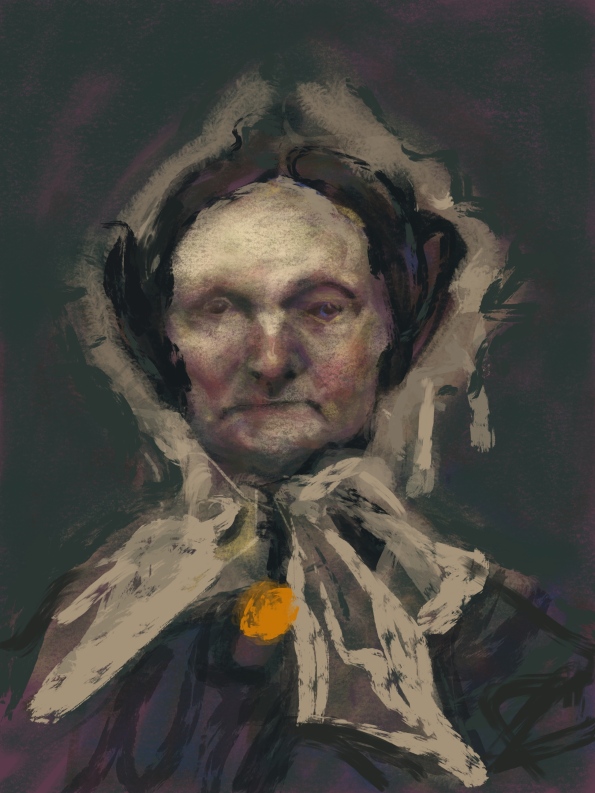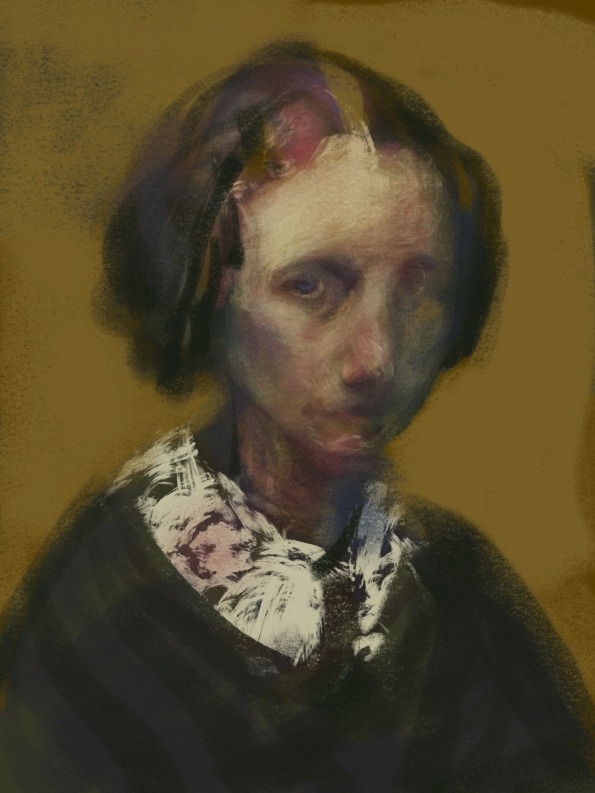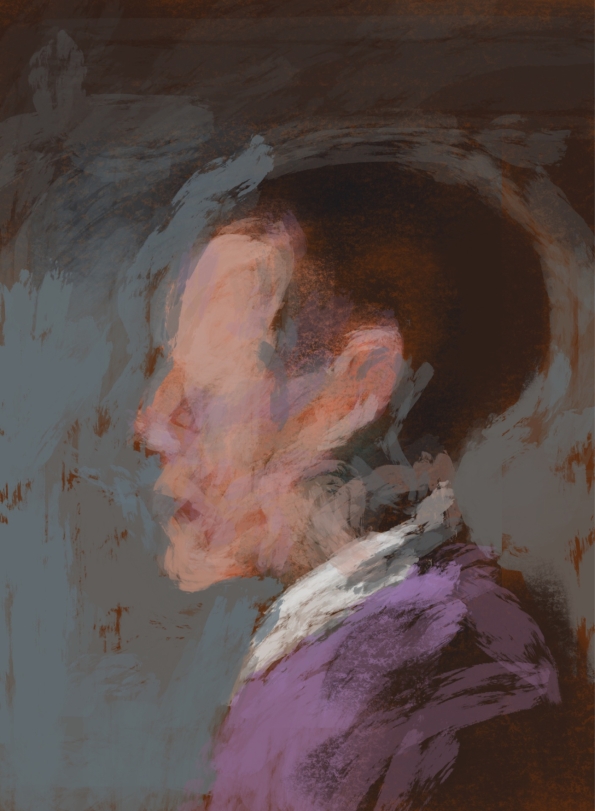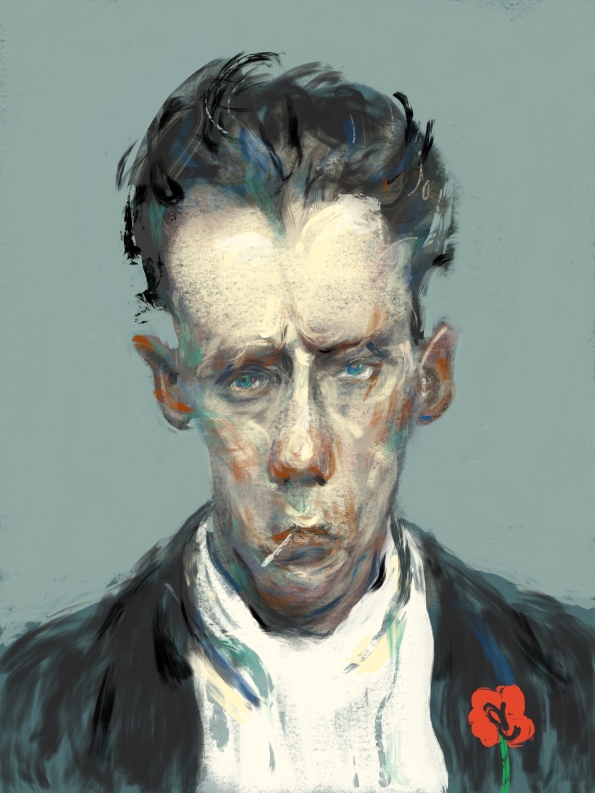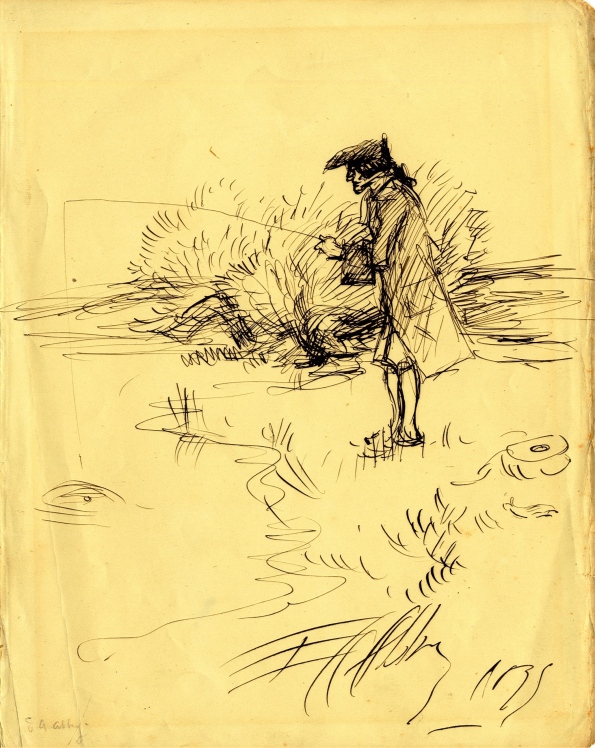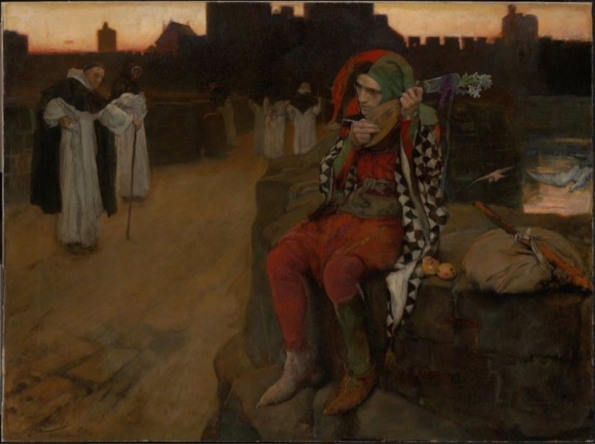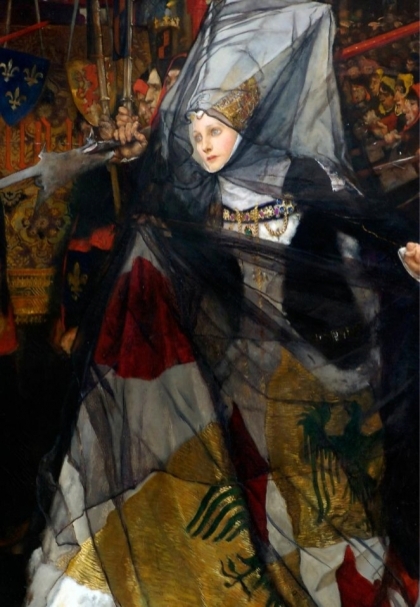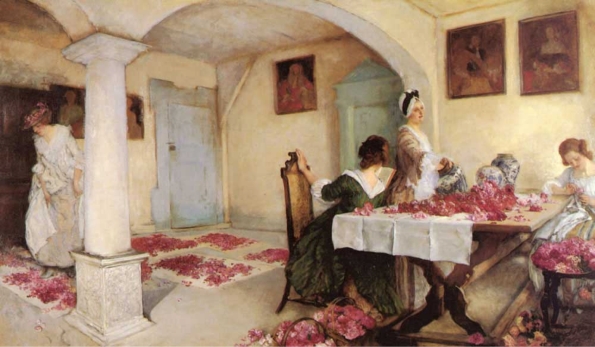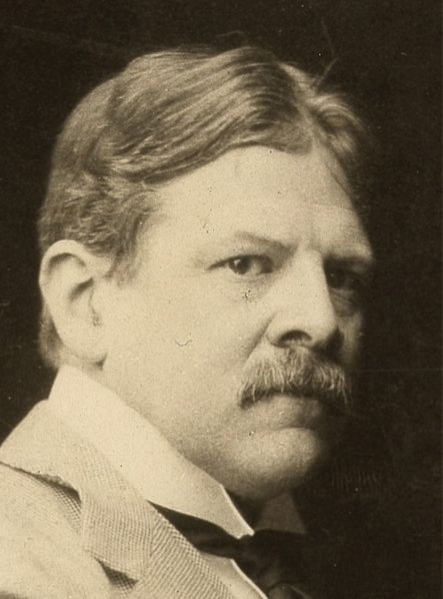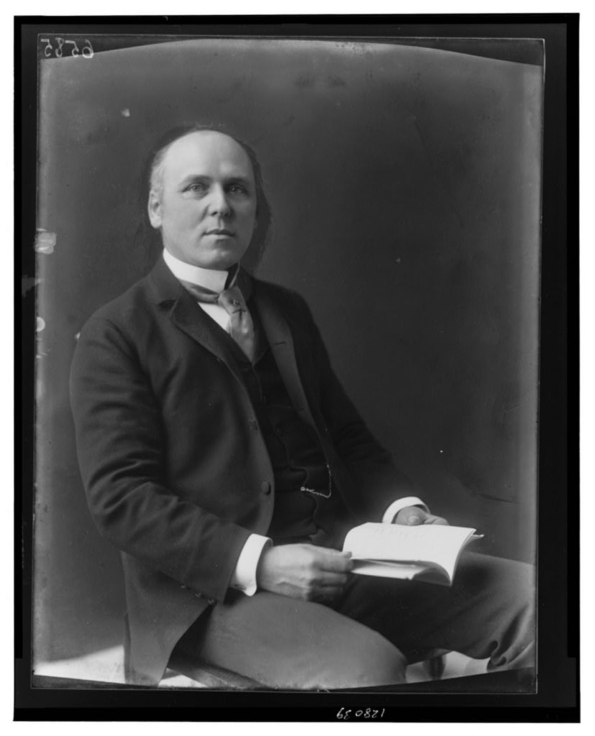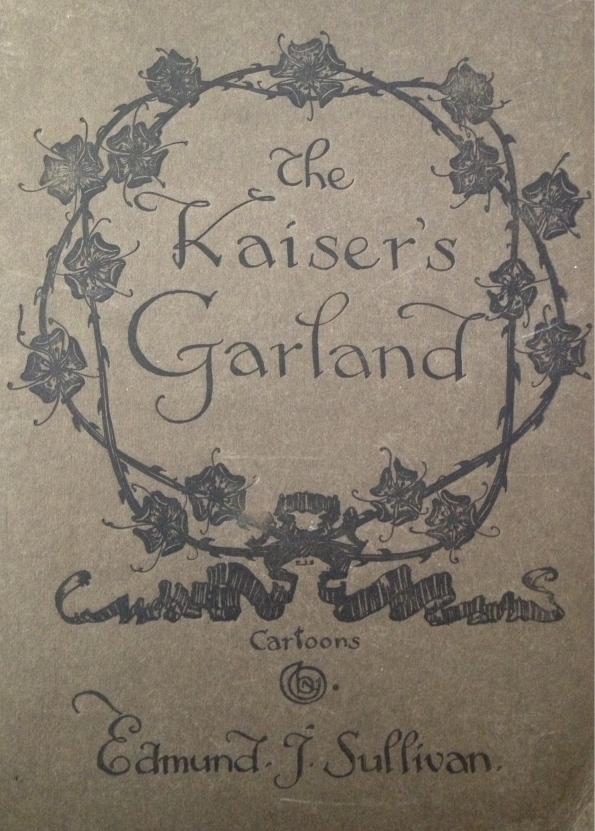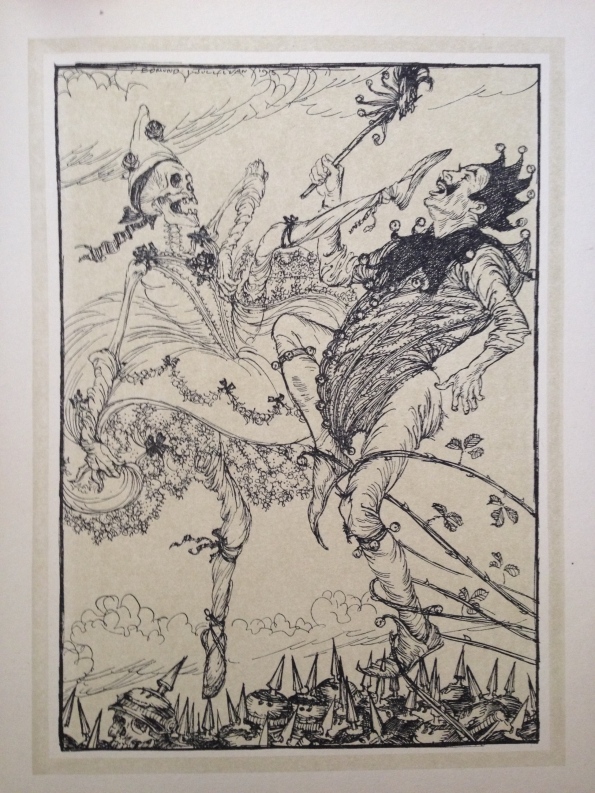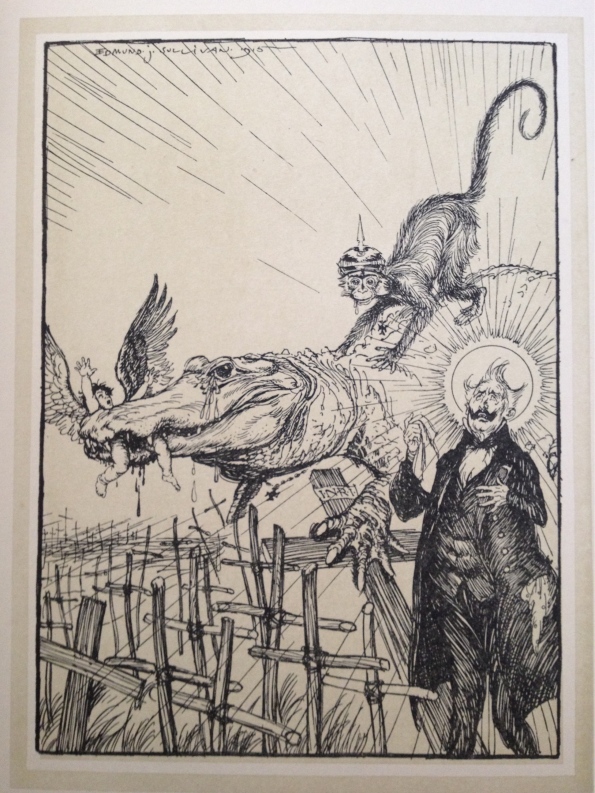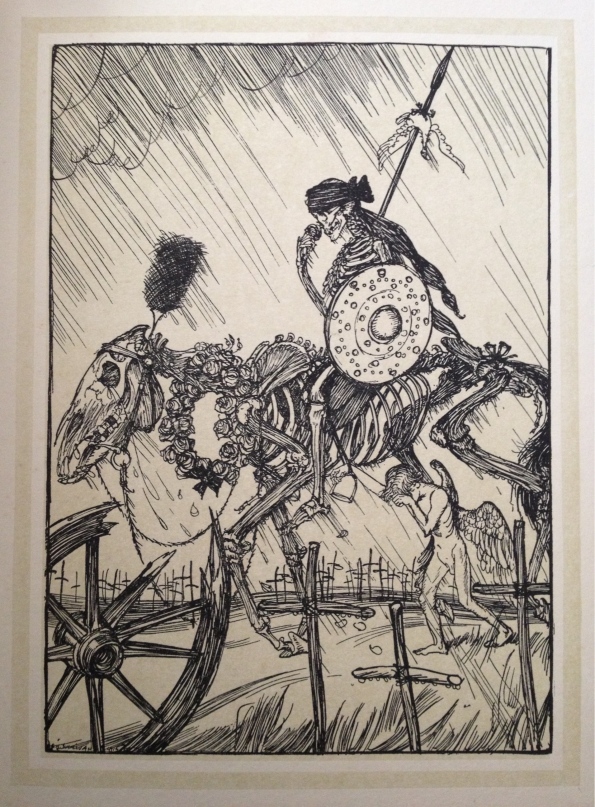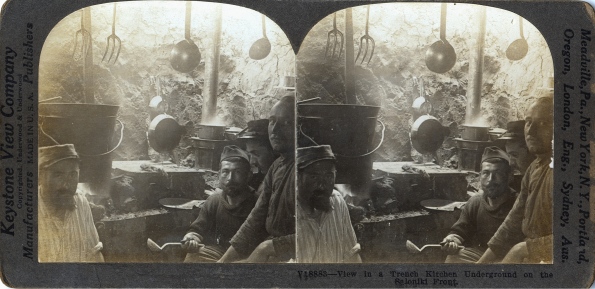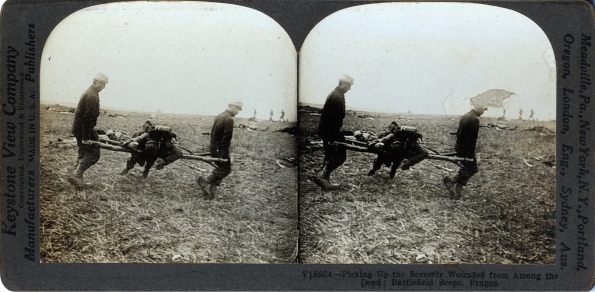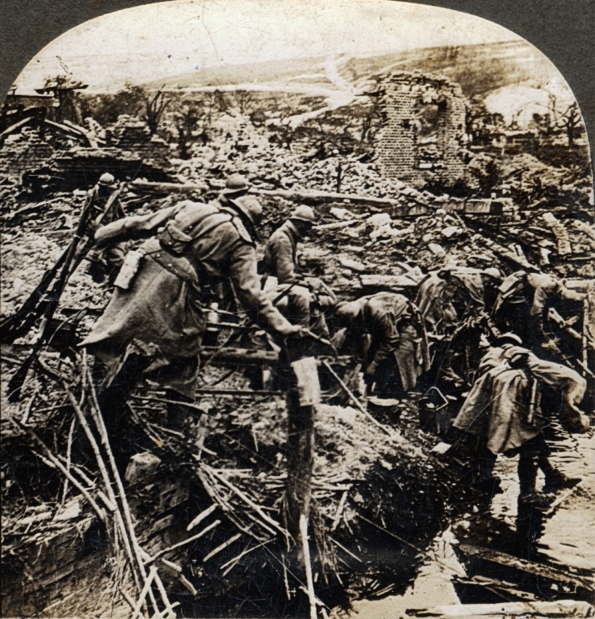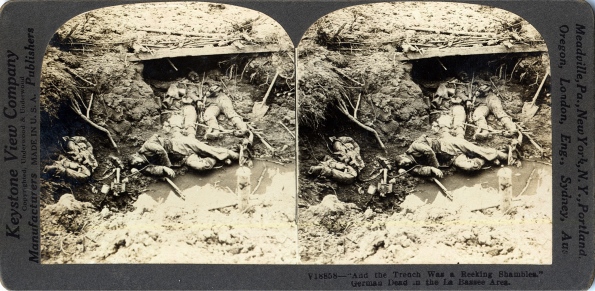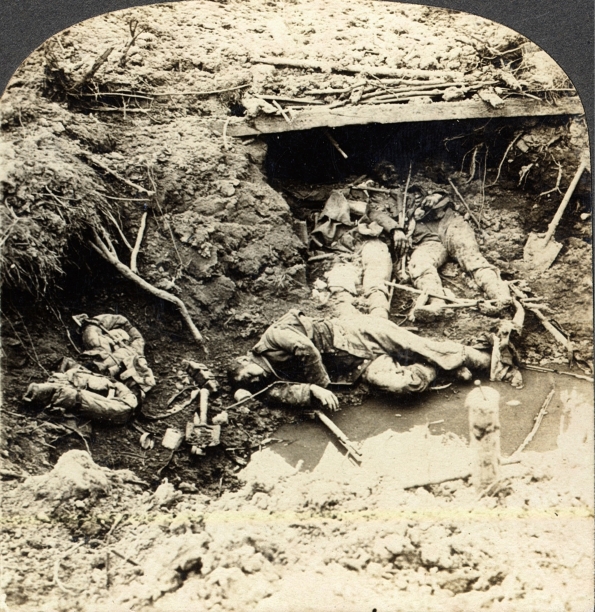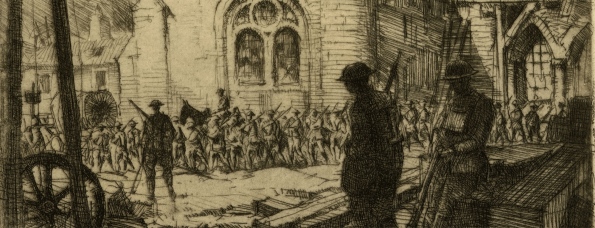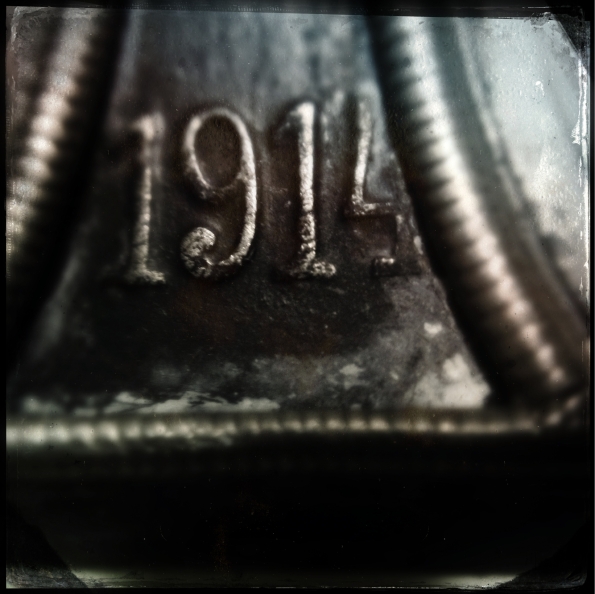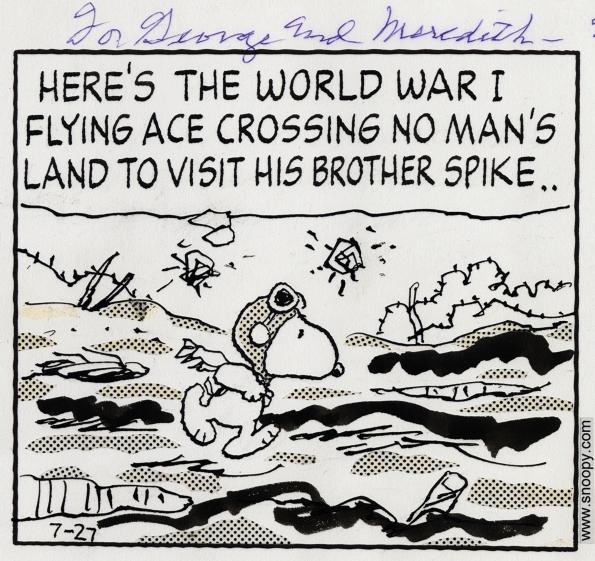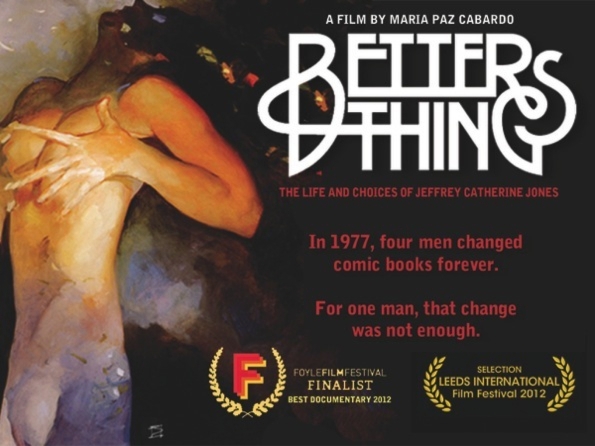Why? (Blog Archive)
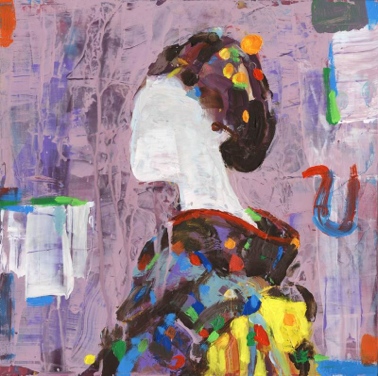
————————————
Below are the original comments that came in for this post and my replies:
luisnct
I don’t think europeans, as a whole, have more understanding or appreciation for the arts. I mean the regular people, the worker who only wants to drink beer and watch tv, but too the businessman who’s life appreciation is based on money over all…
I think art is a way on find a sense to our lives. In a world with so many destruction, art means creation, a light shining on the darkness and, as you said, a way of redeem human societies from their faults and crimes against nature and other human beings.
Monday, February 15, 2010-7:57 AM
George Pratt
My mention of European appreciation of the arts is based on my own observations. Having been fortunate enough to have my art be appreciated over there to have them fly me about and show me their wonderful cities and museums, I’ve met many, many, many interesting people.
Without a doubt the individuals I spoke with could intelligently discuss art and what it means to them, as well as what it means historically. Indeed, many impressed me as knowing much more about the subject than even me, and I think I have a pretty thorough knowledge of art. But more importantly, art seems to influence them in their daily lives.
In America we’ve thrown so much of our history to the winds, sold to the lowest bidder. Architecture is torn down to make way for the new. Most buildings seem to be thrown together with no concern towards his they fit in with the landscape or with what was there before. And most of it feels transitory, as if it isn’t meant to last in the first place. But there, they live in the midst of their past, as well as their futures. The old sits with the new, though, yes, not always nicely so. But the rich history hasn’t been paved over. It’s why we travel there, no? To wallow in the architectural and artistically historical world that is Europe.
But, I agree that art is such a positive force. I try to get students to talk about their “art moments”, where art overcomes one physically and emotionally. I have these moments all the time. Hell, maybe it has a lot to do with my sort of depressive nature, my chemical imbalance. But I’m moved to tears by art all the time.
Watching Cirque du Soleil I was totally overcome with emotion. That humans can do such amazing things! It made me proud to be a human. Watching a television show which I missed first run called “Slings and Arrows” I’ve been moved by every episode. But most assuredly when they put on their productions and show me a Shakespeare play that is so incredibly moving, especially when they juxtapose it with current life. It’s been nailing me. Again, that humans can create such wonderfully moving things is amazing!
It’s the best we have to offer, really, aside from the great virtues.
Yes, and I feel incredibly fortunate to be able to practice what I do and that there is an audience willing to support it.
Saturday, February 27, 2010-4:22 PM
Edward Kinsella
Inspiring words George. Thank you.
I’m not sure why I keep going either, but I’m thrilled to be a part of it every day. And, ya know, nothing feels as good as creative expression, at least to me.
Tuesday, February 16, 2010-3:17 PM
George Pratt
Thanks, Ted,
Well, your sketchbooks alone are reason enough for anyone to want to continue doing art. They’re some of the most beautiful works around. They’re inspiration in and of themselves.
What I like most about them, about most sketchbooks generally, is their unassuming nature. This has sort of taken a back seat these days as younger artists seem intent on making their sketchbooks words of art, rather than the place where they let their hair down and do the things for themselves, without any regard to any audience.
Sketchbooks have become a sort of “check me out” thing now. And it’s not that they’re not incredible, they are. They’re beautiful. But I like seeing an artist’s sketchbooks where they’re not performing for anyone. They were just doing their thing and there’s amazing stuff happening, and some…not so amazing stuff happening. And their not afraid to let the good lie with the bad. The contrast make the good stuff even better.
Can’t wait to see you guys when you’re down soon!
Saturday, February 27, 2010-4:27 PM
Shawn
Very well written, George. I feel the same, even though the money hasn’t come, yet, I still feel the desire and urge to create works of art. It’s a sort of therapy to some degree. A way to relax and focus my mind on the beauty of nature.
Thanks for writing this.
Best,
Shawn
Wednesday, August 18, 2010-3:53 PM
Procreate and Pogo Connect Stylus
Thought I’d post a few new Procreate images for you. I’ve still been having a blast with Procreate and have now been playing with the Pogo Connect Stylus and absolutely loving it. It allows me to have pressure sensitivity while drawing and painting in the program. Procreate is designed to work with the Pogo.
I’m not really a digital artist but I have to say that it’s been a lot of fun playing in Procreate. The program totally gets out of the way and just let’s me concentrate on the work. It’s super intuitive.
These images were each done in about an hour or so with multiple layers, flattening then working further. At some point, if there’s interest, I can throw up a step-by-step of my process. I do make my own brushes in Procreate, and with the newest update they’ve made it possible to share brushes as well. Very cool!
Anyway, hope you like these as much as I enjoyed doing them!
Edwin Austin Abbey Sketch
Thought I’d share this lovely Edwin Austin Abbey sketchbook page from 1885. I bought this years ago from Walt Reed at the Illustration House in New York.
Edwin Austin Abbey (April 1, 1852 – August 1, 1911) was an American artist, illustrator, and painter. He flourished at the beginning of what is now referred to as the “golden age” of illustration, and is best known for his drawings and paintings of Shakespearean and Victorian subjects, as well as for his painting of Edward VII’s coronation.” His most famous work, The Quest of the Holy Grail, resides in the Boston Public Library.
Howard Pyle and Oliver Wendell Holmes
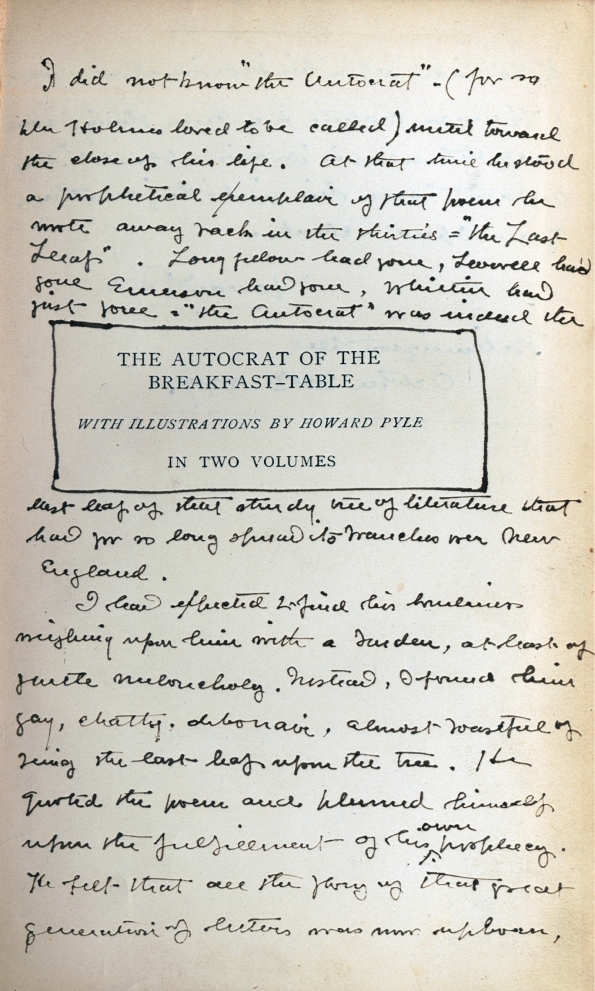
Howard Pyle’s inscription within the pages of “The Autocrat of the Breakfast Table” by Oliver Wendell Holmes
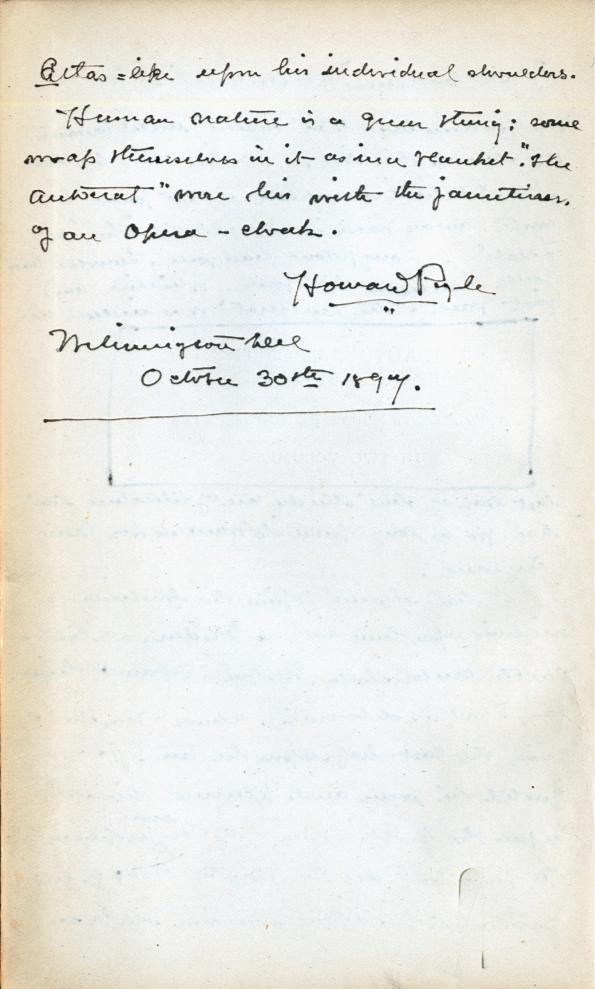
Page 2 of Howard Pyle’s inscription within the pages of “The Autocrat of the Breakfast Table” by Oliver Wendell Holmes
Years ago I was showing in the Jack Meier Gallery in Houston, Texas. Across the street from the gallery was one of the most enjoyable bookstores I’ve ever been to, The Detering Book Gallery. It was a wonderful place, as most old bookstores are, polished wooden floors, grand old wooden bookshelves, lots of nooks and crannies all filled with used and rare books. The smell alone was heaven. They had two floors and one could lose oneself in there quite easily for a whole day. Every time I visited Jack and Martha Meier I would walk across the street and become one of the lost for hours. On their shelves one could find original Robert Crumb art, books with original sketches and inscriptions by the likes of Bruce Bairnsfather (I can’t believe I let that one get away!) and Howard Pyle.
The Detering Book Gallery is gone now, but has been bought, renamed and relocated. It’s now called Graham Book Gallery and if you’re in Houston I suggest making the pilgrimage there.
The Howard Pyle I did not let get away and I thought I’d share it with you here. It is a two-volume set of “The Autocrat of the Breakfast Table” by Oliver Wendell Holmes, illustrated by Howard Pyle and inscribed by him. I figured this was as close as I would ever get to owning a Pyle original.
Pyle is considered the Father of American Illustration. He was a great writer and teacher as well, teaching the likes of NC Wyeth, Harvey Dunn, Frank Schoonover, etc. at his Brandywine school.
The books were published in 1893, originally copyrighted in 1858. In this particular edition, on the title page of the first volume is a superb inscription by Howard Pyle dated 1897 reminiscing about meeting Holmes and discussing his place in the world of American literature. I have tried to cipher all of Pyle’s handwriting, though some of it I could not figure out. Here is my attempt amended by Ian Schoenherr who I sent this to for possible inclusion on his Howard Pyle blog:
I did not know “the Autocrat” – (for so Dr Holmes loved to be called) until toward the close of his life. At that time he stood a prophetical exemplair of that poem he wrote away back in the thirties – “the Last Leaf”. Longfellow had gone, Lowell had gone[,] Emerson had gone, Whittier had just gone – “the Autocrat” was indeed the last leaf of that sturdy tree of literature that had for so long spread its branches over New England.
I had expected to find his loneliness weighing upon him with a burden, at least of gentle melancholy. Instead, I found him gay, chatty, debonair, almost boastful of being the last leaf upon the tree. He quoted the poem and plumed himself upon the fulfillment of his own prophecy. He felt that all the glory of that great generation of letters was now upborn, Atlas-like upon his individual shoulders.
Human nature is a queer thing; some wrap themselves in it as in a blanket. “The Autocrat” wore his with the jauntiness of an opera-cloak.
Howard Pyle
Wilmington Del
October 30th 1897
The Last Leaf
I have forwarded scans of this inscription to Ian Schonhoerr for his exceptional blog on Howard Pyle which you would do well to visit. It’s a treasure trove of information and drawings and paintings about Pyle’s life. I highly recommend it.
The Spoils of Saint Hubris

Sterling Hundley’s Kickstarter campaign
One more plug: I hope that you’ll join me in backing Sterling Hundley’s Kickstarter campaign “The Spoils of Saint Hubris”. I’ve known Sterling for quite awhile now and have had the privilege of teaching with him at VCU and at the Illustration Academy and TAD. He’s one of the most conscientious teachers I’ve ever had the pleasure to meet. His students are indeed incredibly lucky to have him as a teacher. He’s also one of the best artists I know. I’m proud to call him a friend.
The personal work that Sterling is producing is just incredible and deserves to be seen by a much wider audience. Please check out his film about the project and do what you can.
WWI Collection Peek
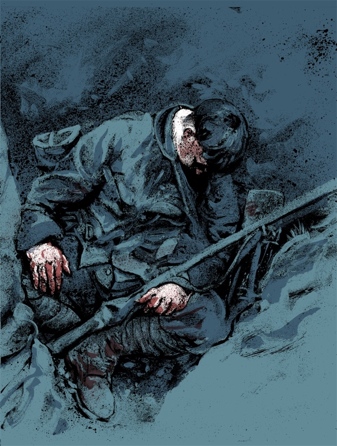
I’ve been asked many times “Why World War One?” It’s not an easy question to answer as there are several reasons for my interest. The most important was just getting hooked on reading about it as I researched my first graphic novel “Enemy Ace: War Idyll” years ago. The histories and memoirs of those who were there and fought that war touched me deeply. Those who experienced that war and who wrote about it were able to write about it with great clarity, intelligence and emotion. And reading the letters from the soldiers provides an indelibly visceral insight into thier thoughts and aspirations. One is immediately impressed by their honesty and their education. The letters are so well written, they are able to say what they mean with eloquence and, again, clarity. And reading those letters opened a door into their hearts that I’ve not been able to shake — nor would I want to. A generation cut down in the flower of their youth. It continues to resonate in me and the images I make. Stories continue to present themselves to me, rising unbidden into my mind.
As a child I was a nut about World War II because my father had been in that war and had history books about it scattered all over the house. His uncle Dick was in the infantry in WWII and helped liberate the Dachau concentration camp. He was also made burgermeister (mayor?) of that town at that time to expedite the process of rebuilding. When I knew him he was bent forward, like my grandmother, with crippling arthritis, and the result of a jeep accident. He had what seemed to me a permanent smile on his face every time I saw him. We heard stories about how he was a fantastic sports figure in his day.
All my buddies’ parents were World War II veterans, either fighter pilots, bomber pilots, navy or infantry, so we had piles of uniforms and gear to play with. Also the World War Two movies were very prevalent at that time, as well: Audy Murphy (himself a Texas boy) in To Hell and Back, 633 Squadron, 12 O’Clock High, The Guns of Navarone, The Dirty Dozen, The Great Escape, Where Eagles Dare, The Longest Day, A Bridge Too Far, on and on. Television had its share as well: Hogan’s Heroes, The Rat Patrol, Combat, etc. It was part of the general psyche of the time. The war was not but fifteen to twenty years over. Not to mention that during the whole of my childhood Vietnam was a constant source of anxiety to me and my friends. We grew up with it — the body counts on television, the news stories in the papers and television, the neighborhood boys who left, those who didn’t come back — and worried that we would have to go ourselves. My best friend’s mother was constantly telling us she was going to shoot us in the foot so we wouldn’t have to go. Interestingly, it didn’t stop us from playing guns.
In school we crowded around a worn out copy of Edward Jablonski’s “Air War” that was perpetually checked out, scouring the pages for the sometimes gruesome photographs inside, drawn to them like moths to a flame. Rubberneckers driving by a terrible accident.
World War I followed me throughout my childhood, though I didn’t realize it at the time. My grandfather was in WWI but didn’t see any action, as far as I know. I can remember him setting his 1911 .45 on the coffee table and, with eyes closed, disassembling and reassembling it while puffing on his wonderfully aromatic pipe and sipping from his flask of Jack Daniel, the two smoky smells/flavors mixing in the air.

My Grandfather in WWI

My high school English teacher, Mrs. Kirkindall, posed for Howard Chandler Christy for his World War I poster “Gee!! I wish I were a man! I’d join the Navy!” She knew I was into art and impressed me with that. It’s definitely her smile and eyes beaming out of that poster. The odd thing was why I would know that poster in the first place, since we didn’t really study World War I in class. But I did know who Howard Chandler Christy was, as well as James Montgomery Flagg, and other classic illustrators, their work peppered through the various war books I would invariably find myself digging through at the time.
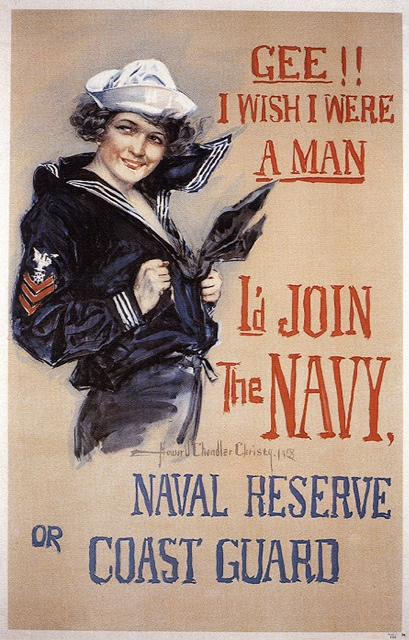
My English teacher posed for Christy for this poster.
That’s where I found the Harvey Dunn drawings and paintings while growing up. They made a lasting impression on me and cemented a visual “take” on the First World War that I carry with me still. His drawings gave the soldiers so much visual power, yet they were humble. He made them human. Unfortunately the images were always in black and white and I didn’t get to revel in the power of his color until years later while shooting a documentary on him.
I took piano lessons as a kid, which I wasn’t into. I wanted to play baseball and draw all day. But I was mesmerized by my teacher’s handwriting. She would sharpen those pencils to long points and really bear down while scribing graceful lines. The first piece I learned was “The Caissons Go Rolling Along.” The song was originally written in 1908. John Phillips Sousa dropped the key, changed the harmony and the rhthym in 1917 and released it as “U.S. Field Artillery”.
I was hooked on Charles Schulz’s Snoopy and the Red Baron, and, of course, Joe Kubert’s “Enemy Ace” comic book. My family went to Estes Park, Colorado a few times for summer vacation and in a shed at the lodge there was a Red Baron game that I would play incessantly.
I worked on Enemy Ace: War Idyll while living in Brooklyn, NY. Once, I happened to be returning from my girlfriend’s place when I passed by two older gentlemen talking on the stoop of one of the brownstones. One was dressed in jeans with a red baseball cap on, and the other, older gentleman was dressed incredibly dapper in a dark suit, hat and cane. As I passed I heard one of them mention the word “trenches”. I pulled up short and introduced myself and mentioned that I overheard the word trenches. The guy in the baseball cap told me that he fought in World War II but that his buddy fought in the trenches in World War I. I could’nt believe my luck! That day I got to meet Frank Snell who was a machine gunner who fought with an Australian unit in the trenches. Amazing that he was still alive as the average life expectancy of a machine gunner in WWI was like a week or so at the front lines. Machine gunners were first in and last out, and every enemy fighter was gunning for them.
I got to speak with Mr. Snell a couple of times and he was a wonderful raconteur and filled me in on his time in the trenches. I remember him snapping his fingers close to my ear repeatedly and telling me that that was the sound the bullets made as they went by his head. He explained to me the differences in the German machine guns and the British and American machine guns, the rate of fire, etc. Amazing. He had been wounded and gassed, and evacuated by train. He told me a story of a friend of his who had just finished cleaning his handkerchief, had wrung it out and was laying it on the parapet of the trench. He was shot through the handkerchief and between his eyes. How does one live with those kinds of memories?
Several years ago I was visiting New York to jury the Society of Illustrators show and afterwards several of us went to a restaurant not far from the Society. I don’t remember the name of the establishment but it had an Old World feel to it and there were lots of people at the bar. There was a piano player and he was busily running through lots of standards. There was an old couple sitting next to us and the gentleman asked the piano player if he knew a certain song. The musician did and started playing the tune. I don’t remember the name of the tune, but it was a World War I tune. The gentleman said that he had been at this restaurant once before, back in 1918 just before he boarded a ship to go “over there”. The song he asked the piano player to play was that song. How crazy is that?
I have a great friend and mentor, Phyllis Lee, who is a wonderful painter who pushed me in all the right ways as a young artist. She is convinced I died in the trenches. Who knows?
Anyway, as if it isn’t already obvious, I’m a packrat. I’ve always had the collecting mentality. It began with comic books, and then spread into other areas of interest — art, books, cards you name it. And in the course of my travels and research to dig deeper into World War One I’ve been able to collect lots of interesting things. Of course most of what I’ll show you here has to do with art, though I have collected other things as well — physical objects, helmets, trench lighters, whistles, bullets etc. There’s a presence to these things that lends great weight and gravity to my thinking about that war and what those people went through. But the printed matter from that time is wonderful and many have no sense of the plethora of interesting art from that time. There’s lots of stuff I would love to show here, but I’m trying to present just the material that was actually printed in the First World War, rather than stuff that came out later about the war.
In World War II America had cartoonist Bill Mauldin who was drawing the Willie and Joe comic strips for the Stars and Stripes newspaper. Mauldin was able to take a serious situation and make it humorous thus lightening the load for the dogfaces struggling against the Axis powers. He won a Pulitzer for his work and had a run-in with Patton who was pointedly not a fan. He later went on to be an incredibly influential political cartoonist after the war, and his memoirs of his wartime exploits are very engaging reading and I highly recommend them: Up Front, This Damn Tree Leaks, The Brass Ring.
During World War I there was a British Captain, Bruce Bairnsfather, who was doing the same thing, obviously years before Mauldin (though Bairnsfather also worked during WWII and influenced Mauldin). His character was Old Bill and the strips were printed in a British weekly magazine on the homefront called The Bystander. Bairnsfather was in the trenches in Flanders, knee deep in the mud and drew his humorous strips to lighten those soldiers’ lives. He sent them in to The Bystander as sort of a lark, and they began to collect them in their own magazines called “Fragments from France.” They were a hit and ultimately made Bairnsfather a hero with the soldiers and quite a wealthy man, though his fortunes flipped later, I believe.
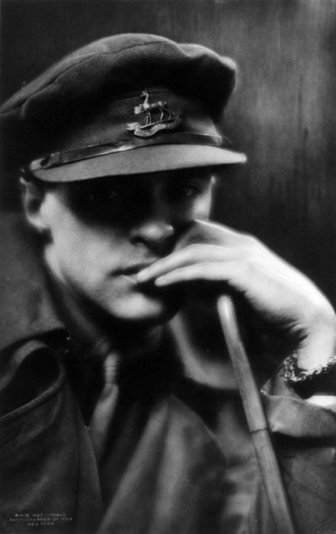
Photo of the author, 1918, by Pirie MacDonald
From Wikipedia: “In 1914 he joined the Royal Warwickshire Regiment and served with a machine gun unit in France until 1915, when he was hospitalised with shell shock and hearing damage sustained during the Second Battle of Ypres. Posted to the 34th Division headquarters on Salisbury Plain, he developed his humorous series for the Bystander about life in the trenches, featuring “Old Bill”, a curmudgeonly soldier with trademark walrus moustache and balaclava. The best remembered of these shows Bill with another trooper in a muddy shell hole with shells whizzing all around. The other trooper is grumbling and Bill advises: “Well, if you knows of a better ‘ole, go to it.”
Many of his cartoons from this period were collected in Fragments from France (1914) and the autobiographical Bullets & Billets (1916). Despite the immense popularity with the troops and massive sales increase for the Bystander, initially there were objections to the “vulgar caricature”. Nevertheless, their success in raising morale led to Bairnsfather’s promotion and receipt of a War Office appointment to draw similar cartoons for other Allies forces.”
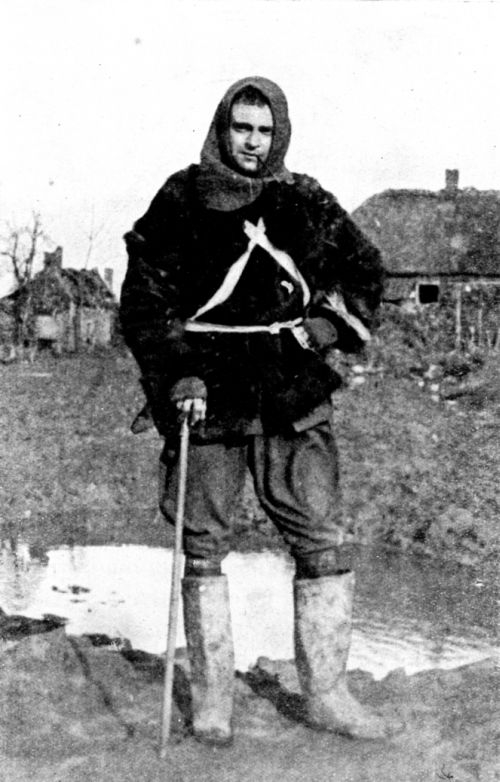
Bairnsfather in Ypres, 1914
His drawings are lots of fun and he was a great cartoonist. I remember going to the Imperial War Museum in London years ago and seeing a Bairnsfather original drawing of Old Bill messing with tins of bully beef done on toned paper in ink with white highlights. What a fantastic drawing! It was so volumetric and done with such skill. Just beautiful! I’ve been a fan ever since.
I was able to snag many of the original printings of the “Fragments from France” on Ebay and I love looking through them. They take me back to my own childhood and my fascination with cartooning, which I’ve never been very good at, but which I am forever awed by, especially the early strip artists like Billy DeBeck, Frank King, Winsor McCay, George Herriman, George McManus, Walt Kelly, et al. I can remember poring over the comic strips (a love of which I got from my father), loving the simplicity of the line and crazy proportions of the characters. Bairnsfather’s drawings fill me with that same sense of lightheartedness and love for that kind of work that I had then. And how poignant that these strips show the indomitable spirit humans have for finding humor in the weirdest places, of finding some way to make the best of an intolerable situation.
Anyway, here is a sampling of his work scanned from the original Fragments from France as well as his book “Bullets and Billets“:
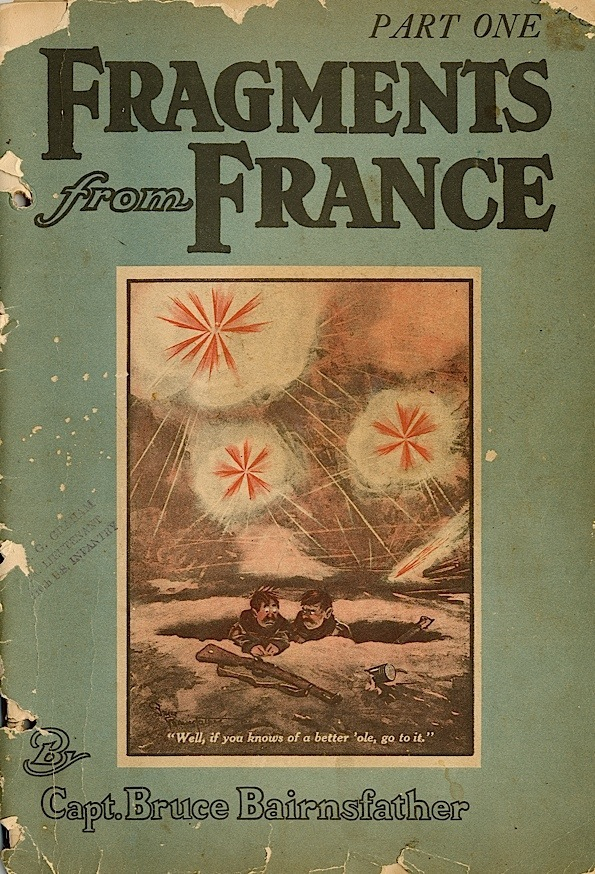
An original copy of “Fragments from France.”
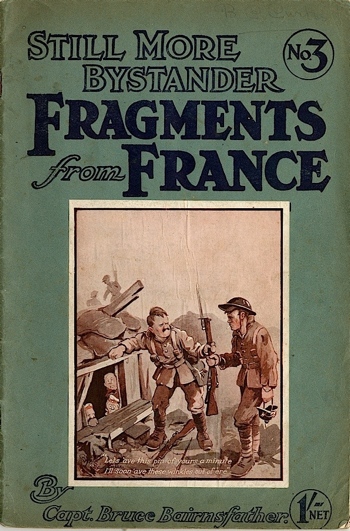
Issue No. 3 of “Fragments from France.”
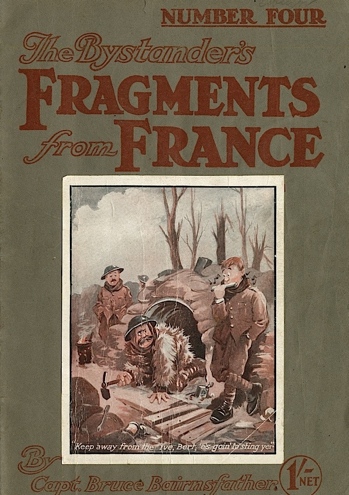
Issue No. 4 of “Fragments from France.”
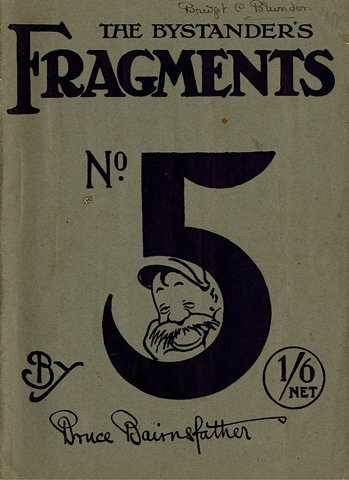

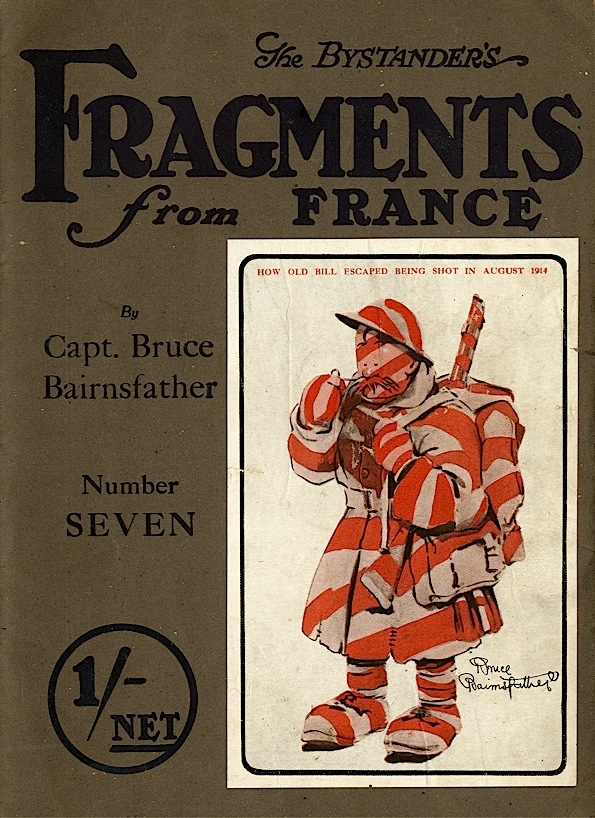
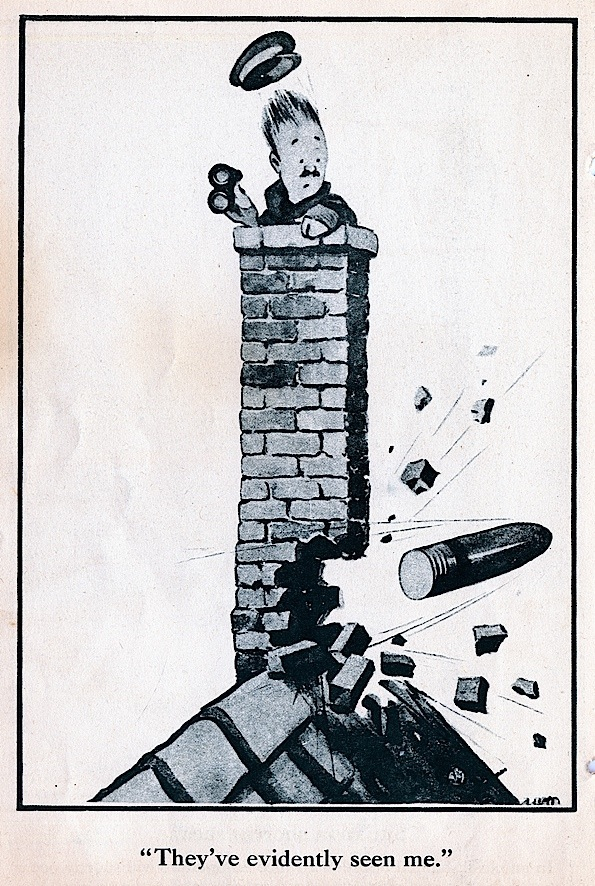
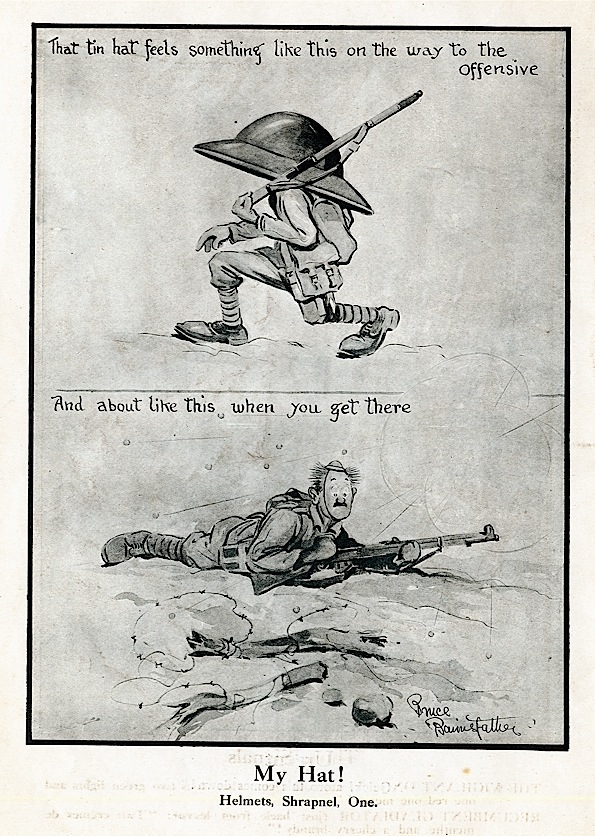

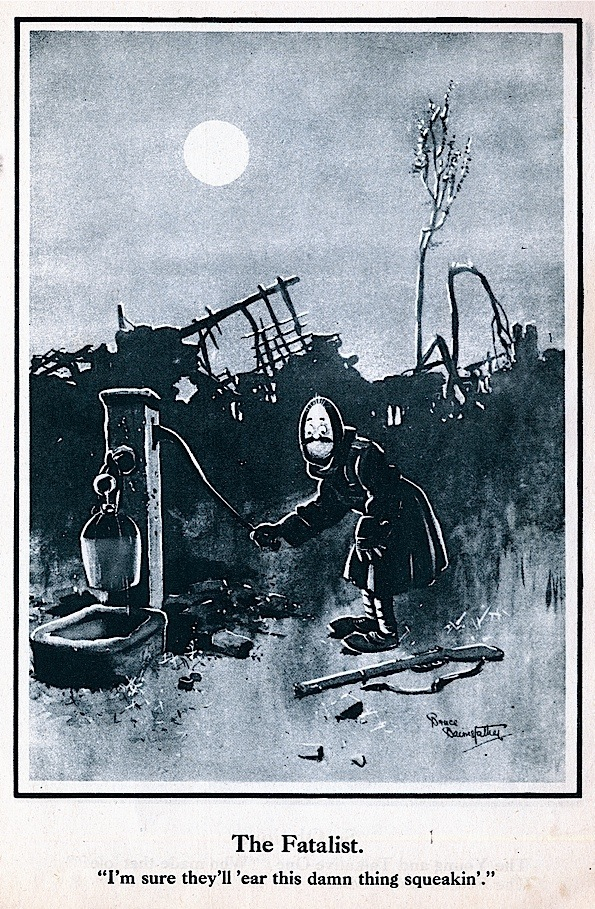
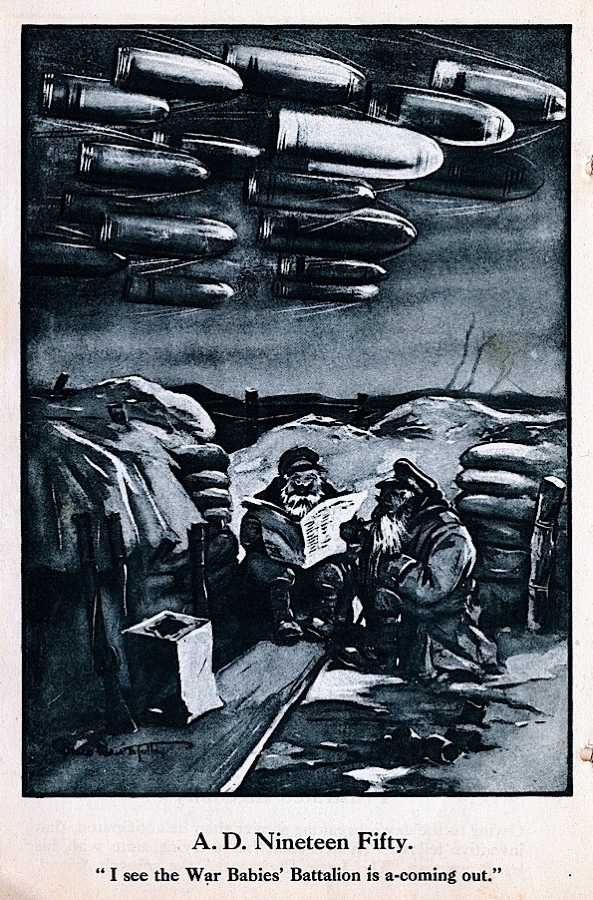

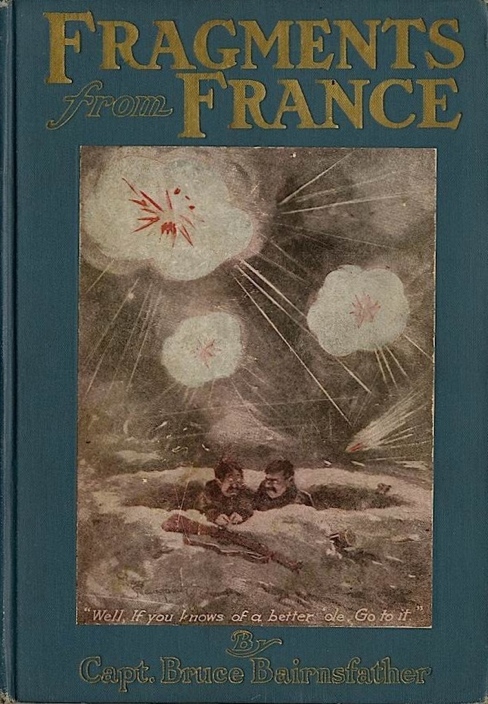
“Fragments from France” Hardcover

Bullets & Billets
Another neat publication I found years ago is “The Kaiser’s Garland” by Edmund J. Sullivan. This book is filled with beautiful pen and inks by this great artist. I believe he was an influence on Arthur Rackham, and looking at the line quality it seems a foregone conclusion. He’s the artist whose work was repurposed for some of the Grateful Dead album covers. Beautiful stuff.
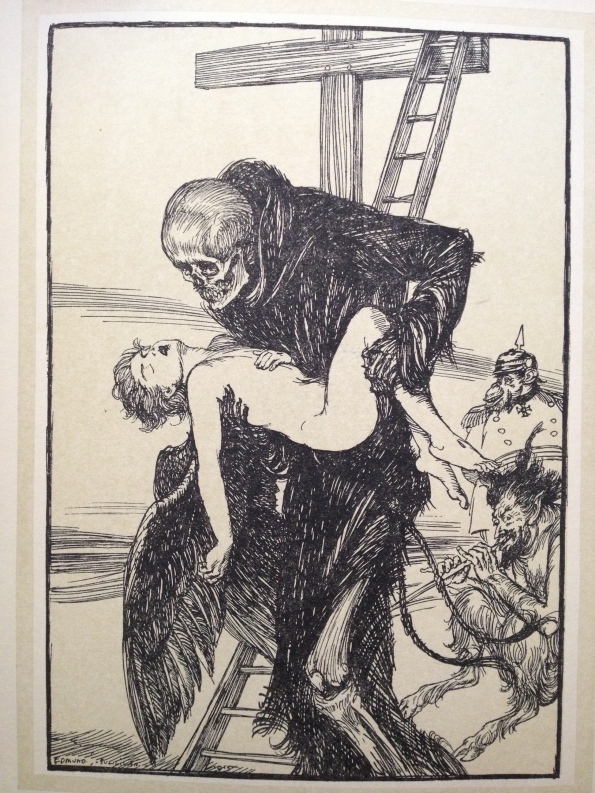
Other interesting publications I’ve been able to collect from the First World War are copies of the French magazine “Le Baionnette”. The French cartoonists working in this publication are fantastic and here are a few pages from those. I found these in a flea market in Dinan on the coast of Brittany years ago. I love the quality of the printing and, of course, the drawings themselves. The Gus Bofa covers are fantastic! Hope you like thes As much as I do.
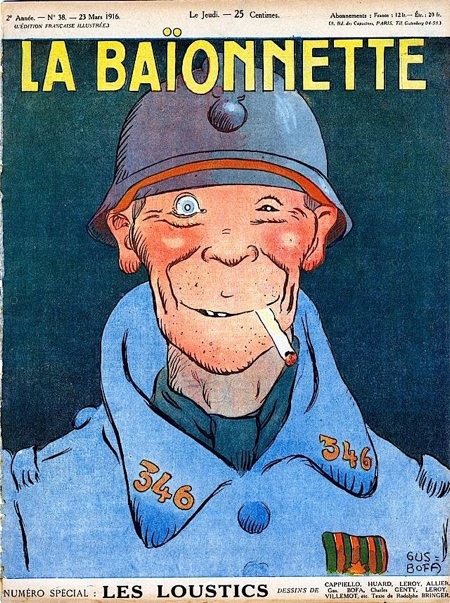
Love this Gus Bofa cover!
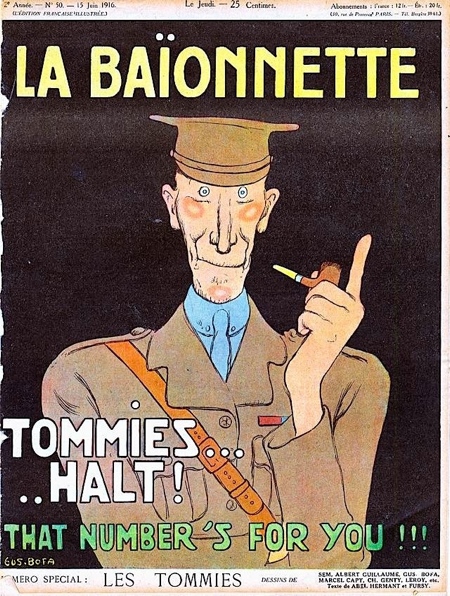
Another Gus Bofa cover.
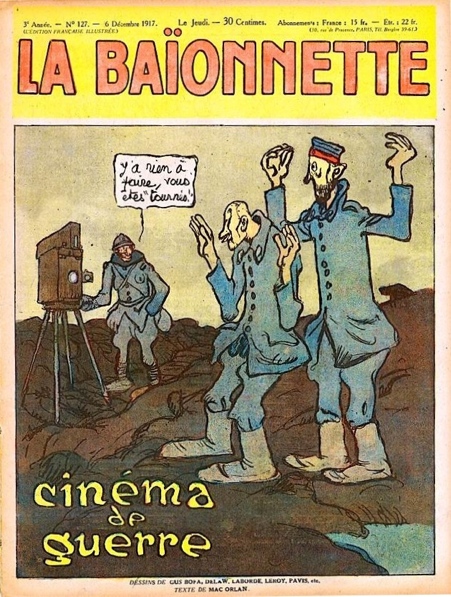
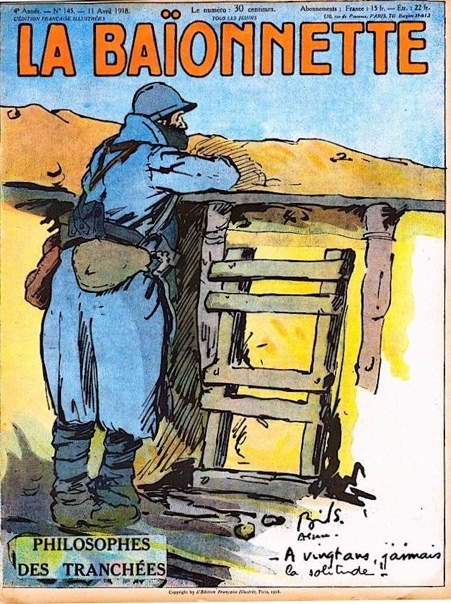
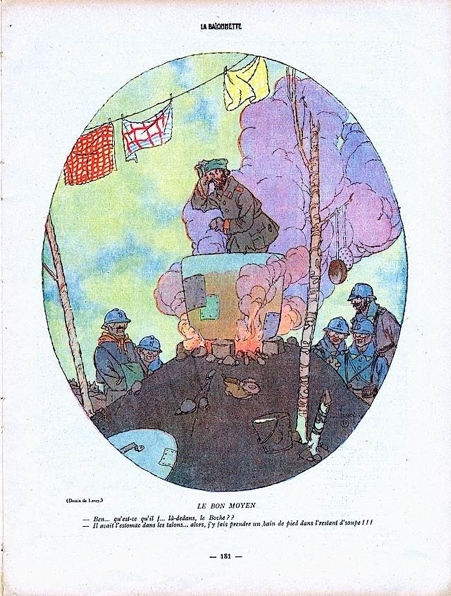
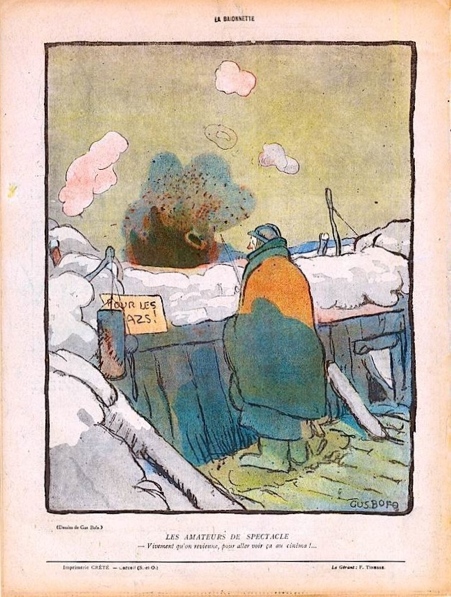
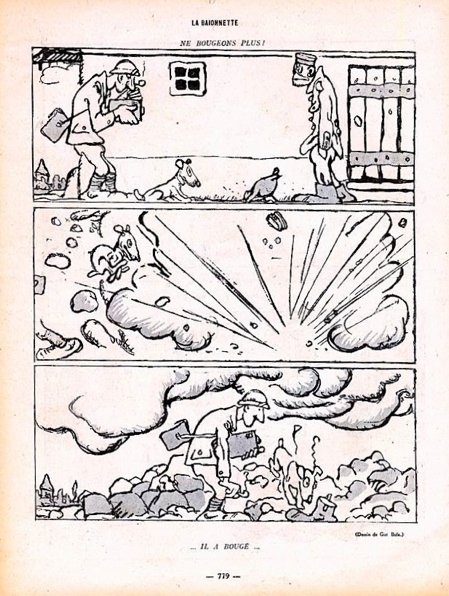
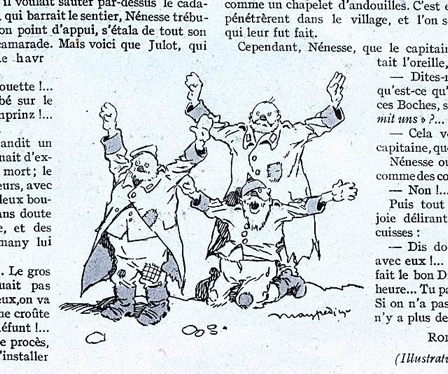
I found “Wally” totally by accident on eBay. It turned up in a blanket search on World War One and I immediately snagged it. What an interesting glimpse into the life of a soldier from that time. A little worse for the wear, but a unique find. I love the format of these. I only scanned one strip as to truly try and scan these would destroy the publication, which is in sad shape anyway.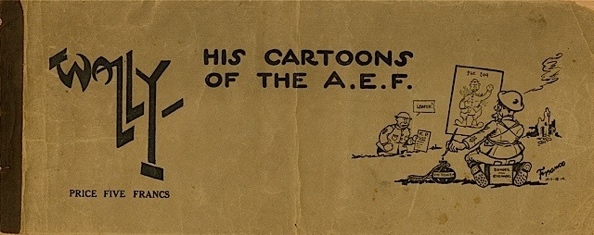
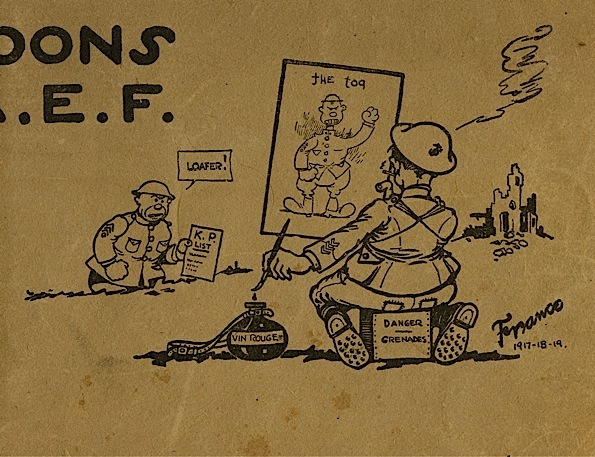

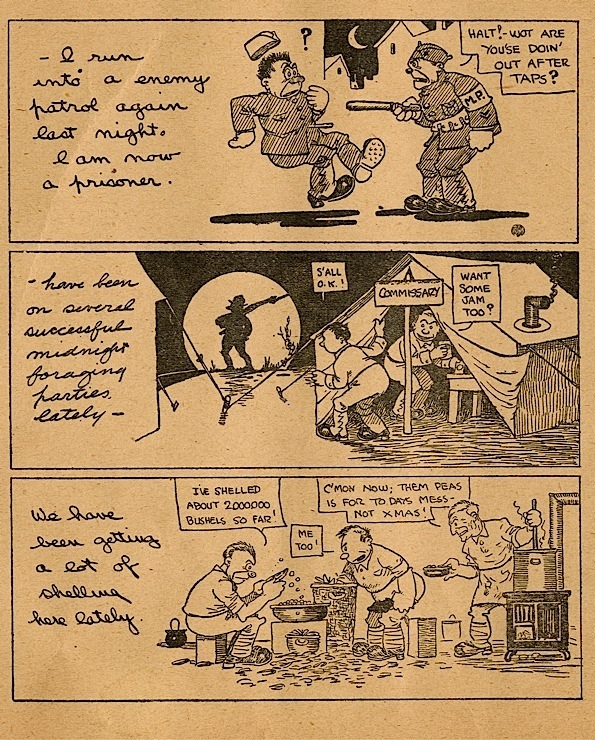
Wally (Detail)
I have a fascination with stereoscopic images and was lucky enough to find this large collection on the First World War on eBay years ago. One can never have too much reference from the time and being able to see these in 3D is remarkable. I’ve also bought many as singles and built up a pretty good collection of others that are not in the boxed version, including some from France that are not as well presented, but which are intriguing images all the same.
If you get the right distance away from these and cross your eyes to overlap the two photos you can see the 3D effect. Or, if you have the viewer it’s a lot easier. 🙂
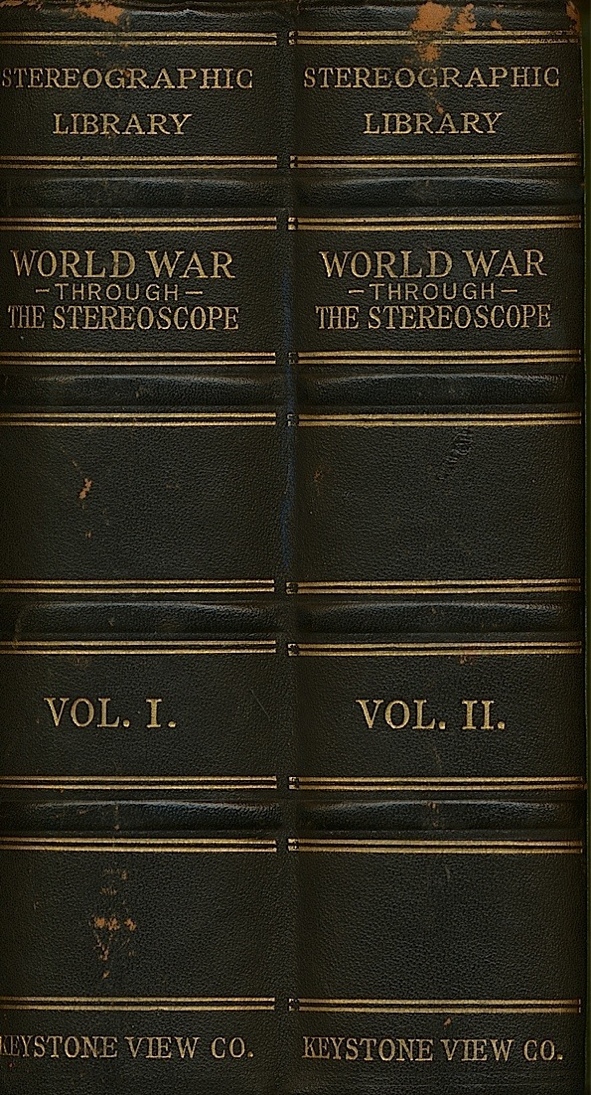
World War through The Stereoscope
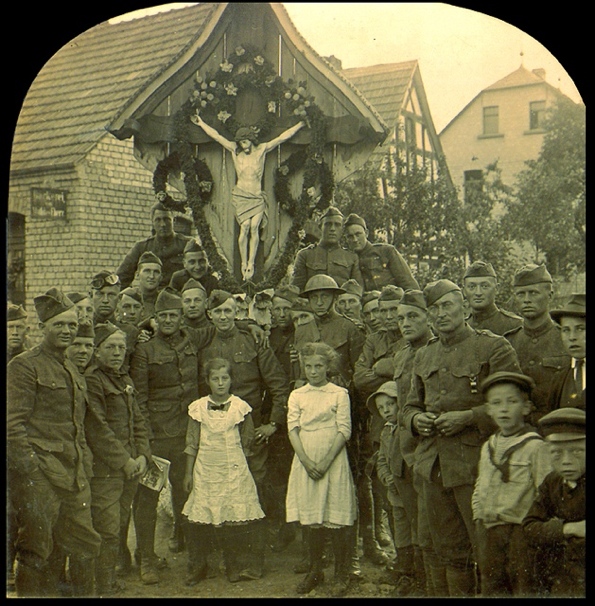
Strong stuff to be sure. And one wonders if our news organizations were this honest today would we be so quick to go to war?
One of the prizes of my collection is the complete New York Times Photogravure of the war from the time. These I was able to purchase from Mad Magazine artist George Woodbridge via his son Curtis, a wonderful illustrator in his own right. There were also a couple of other volumes in the collection, a German volume in particular that is a rarity. These are large, heavy books, tomes really, of just photography, though sprinkled here and there with drawings and maps. These are indespensible volumes of reference and give one an uncompromising visual insight into that time and place. Not only are these huge, bulky tomes but they are brittle with age, so I won’t scan anything from them.
This interesting signed and numbered portfolio of drawings by Forain has some nice prints in it. I also found this on eBay.
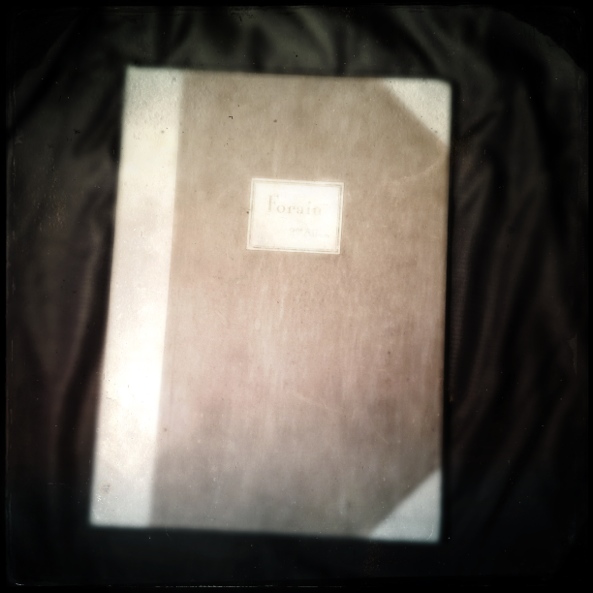
Portfolio of drawings by Forain
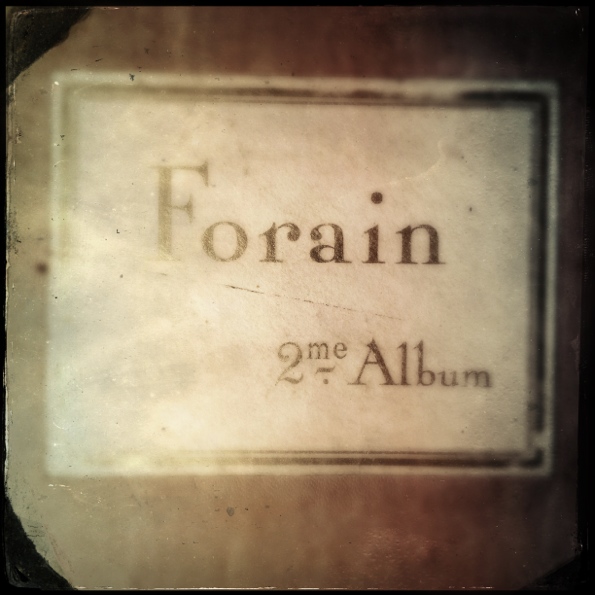
Forain Detail
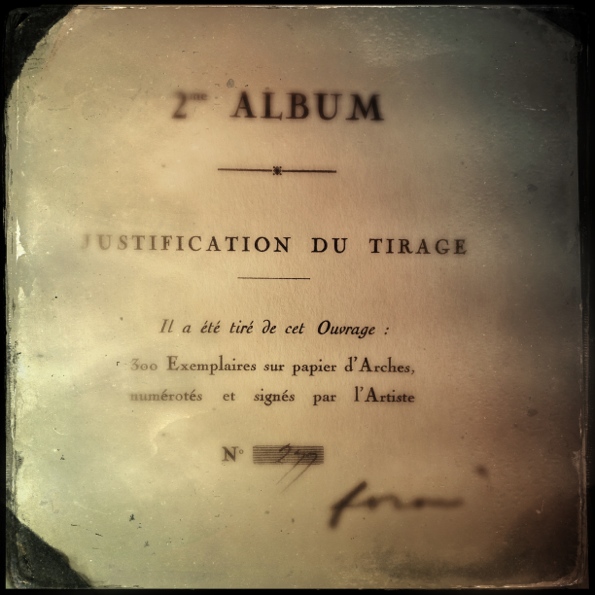
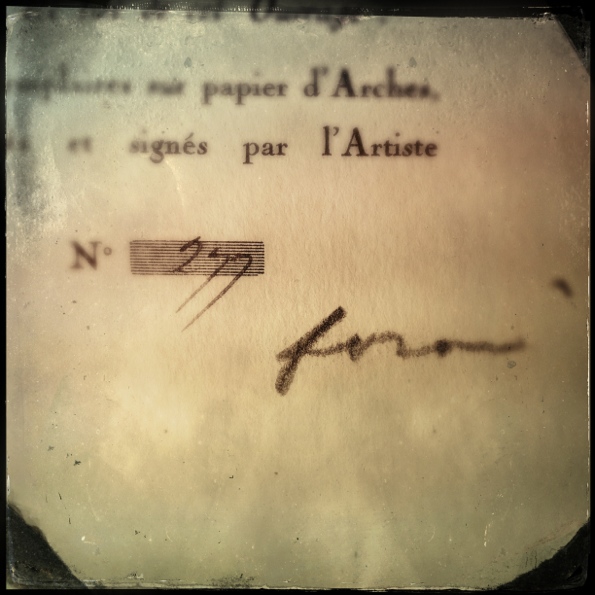
Forain Signature
Bob Burden, the creator of the Flaming Carrot and the Mystery Men, knowing my interest in WWI, came by my table years ago at San Diego and sold me his collection of World War One magazines. These are nice issues of photography.
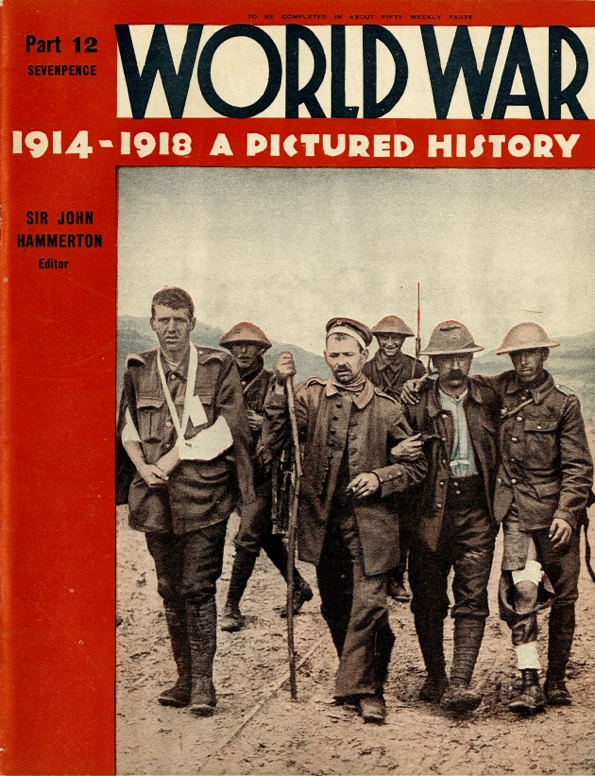
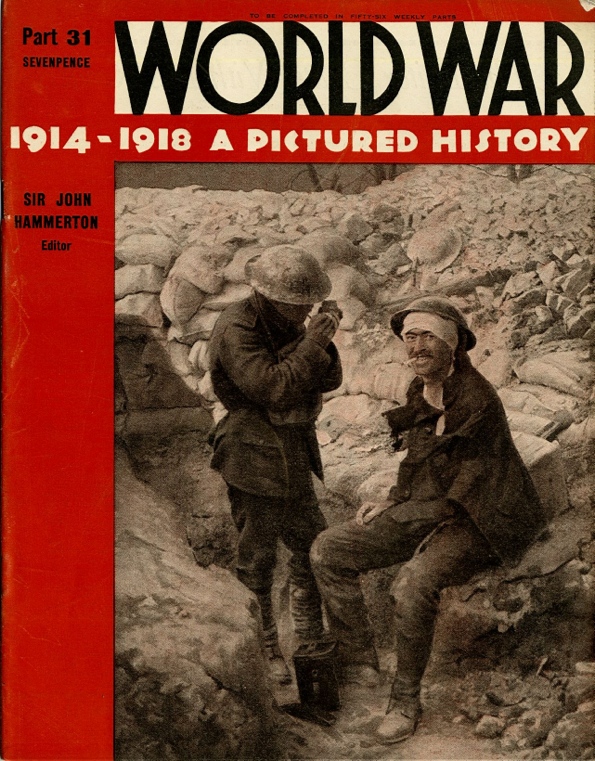
This unique portfolio of a play is illustrated by noted Belgian illustrator Louis Raemaekers whose poignant illustrations and satires of the war and the German invasion of his country swayed public opinion in a major way. Unfortunately I can only scan a little of this as to try and scan other pages would split the spine of the book. So I’m supplementing with photographs. It’s a beautifully produced portfolio with gilt stamping and two color inks with tipped-in plates.
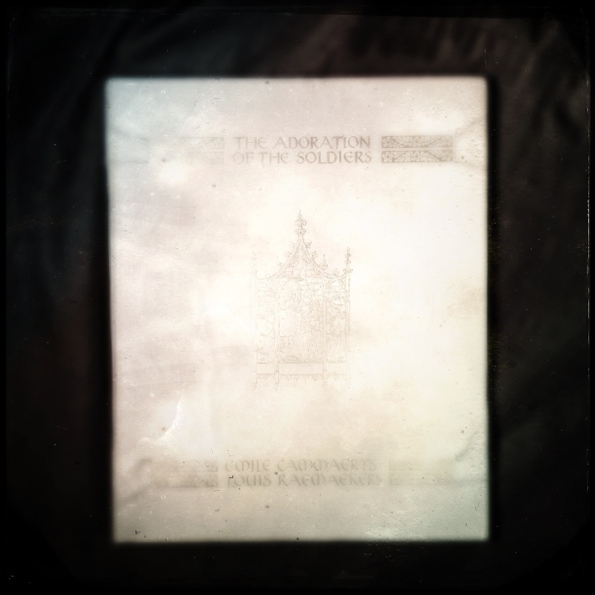
Portfolio by Louis Raemaekers


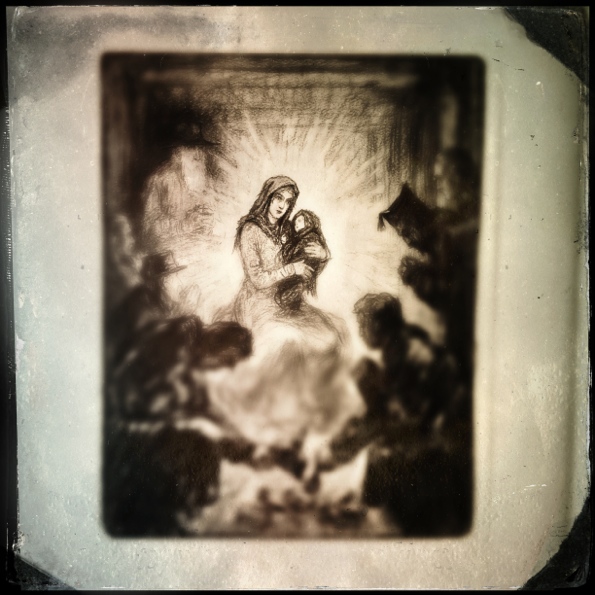
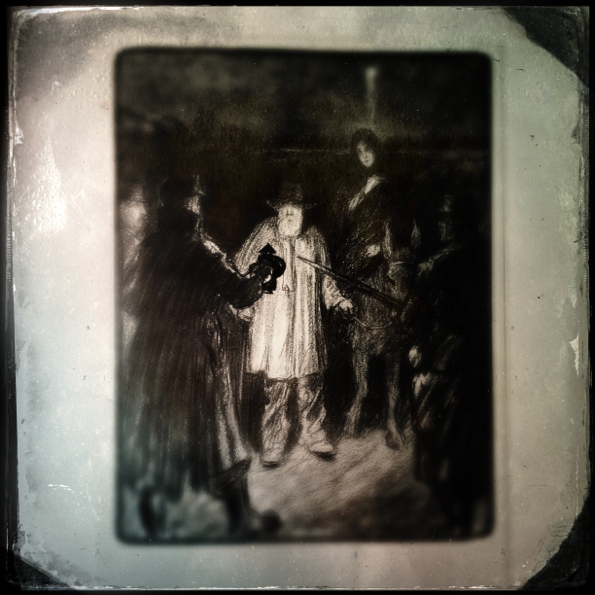
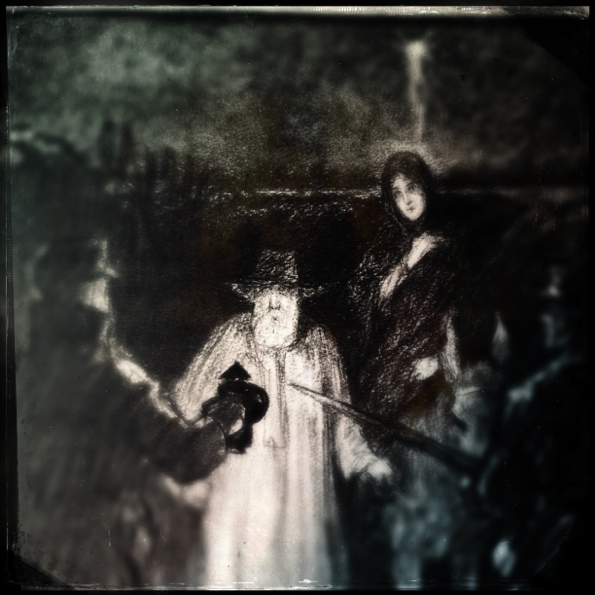
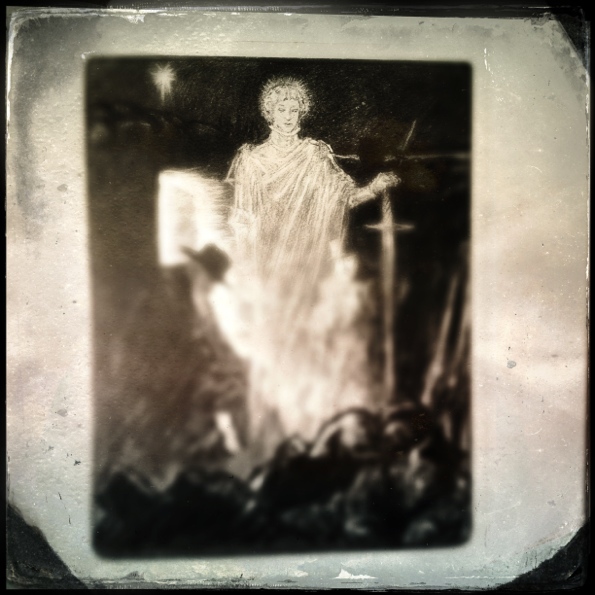
I found this unique collection of drawings by Muirhead Bone in Monterey, California while staying with Allen Spiegle. A fantastic set of drawings covering the Western Front through landscape and various factories during the war. These were all observational drawings done on the spot and as such lend a sense of incredible verisimilitude to that time, especially for another artist looking to get a solid feel for that time.
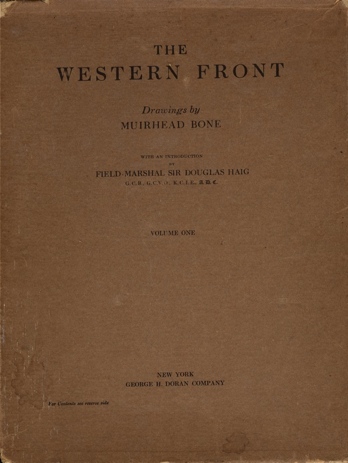
The Western Front: Drawings by Muirhead Bone
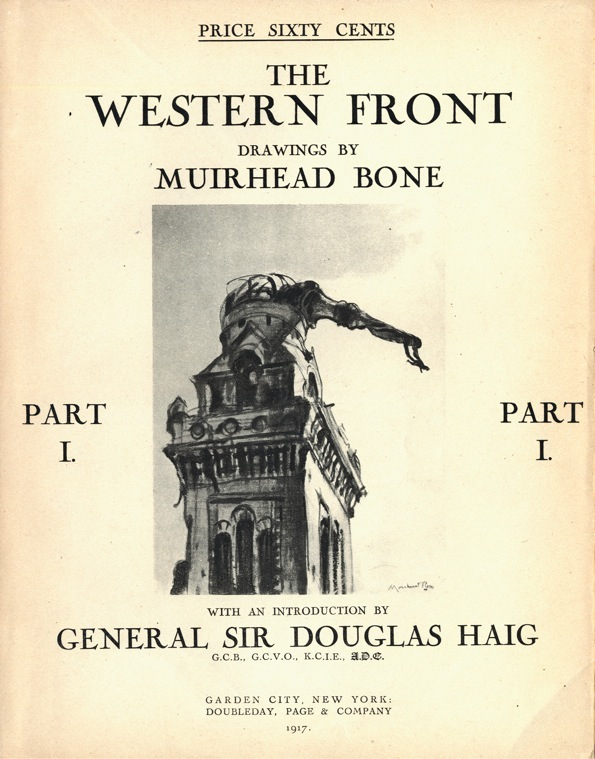
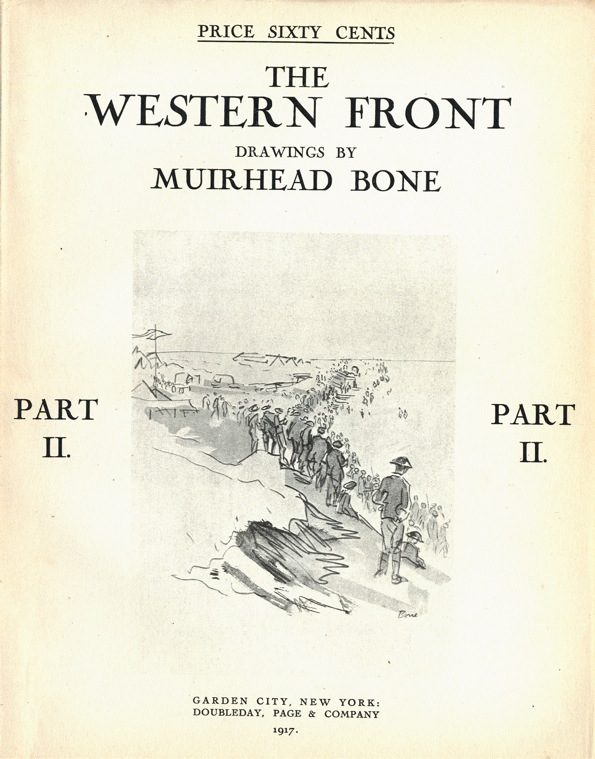
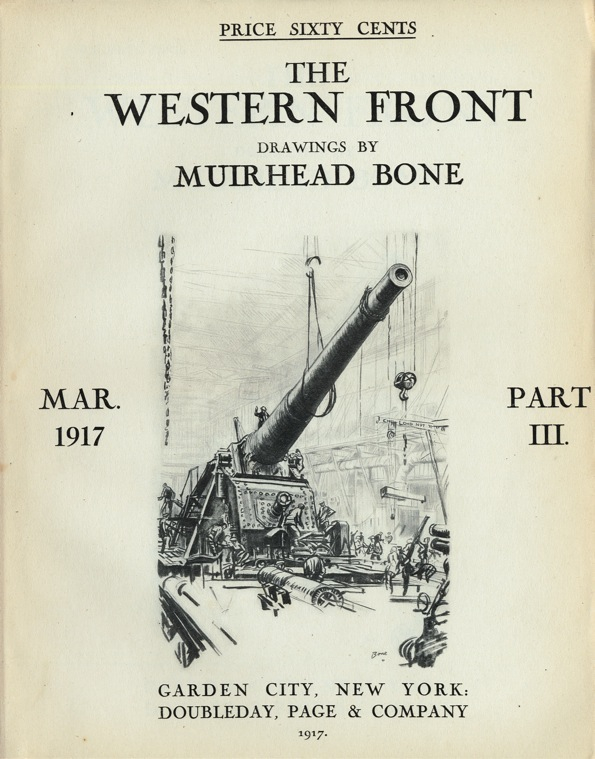
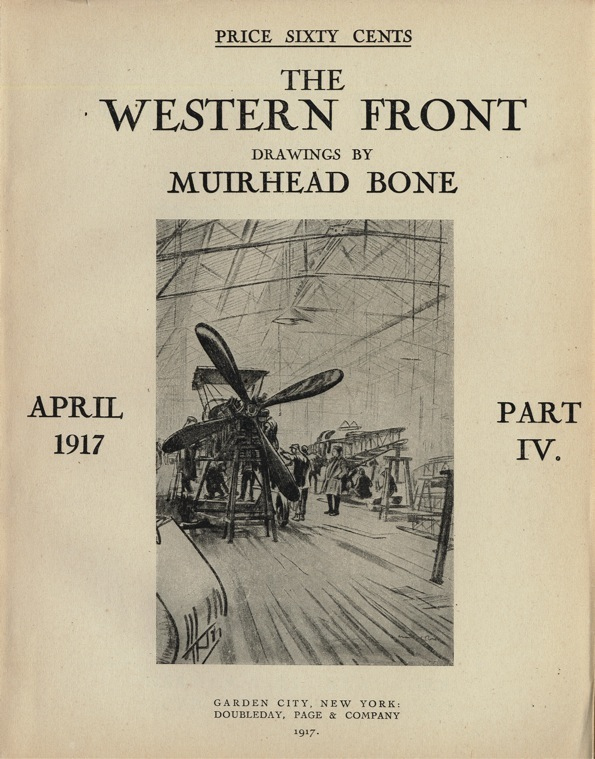
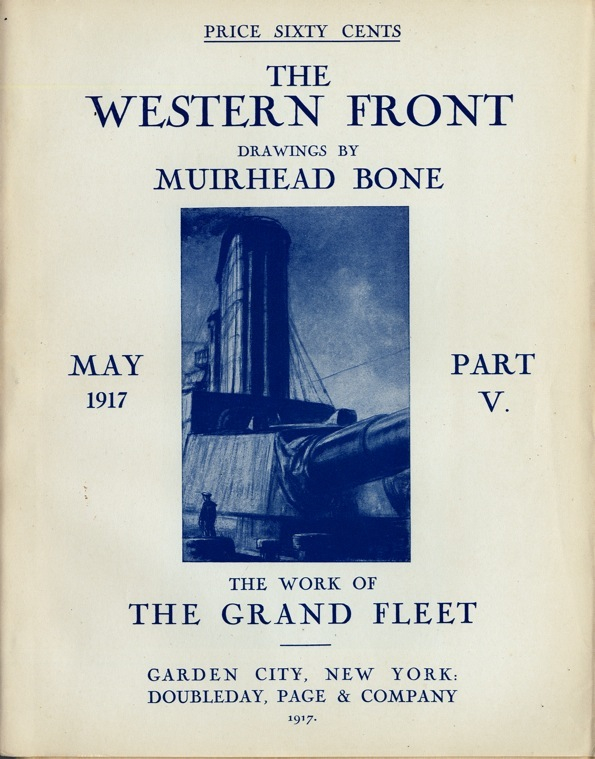 This is a lovely original etching by J. Andre Smith, one of the eight artists sent to the front to illustrate the war for America. Harvey Dunn was another. Six of the eight were students of Howard Pyle, the father of American Illustration.
This is a lovely original etching by J. Andre Smith, one of the eight artists sent to the front to illustrate the war for America. Harvey Dunn was another. Six of the eight were students of Howard Pyle, the father of American Illustration.
Here’s a wacky bit of trivia, an identity disc kit, used to punch the names and serial numbers of the soldiers into dog tags (though they weren’t called that during the First World War).
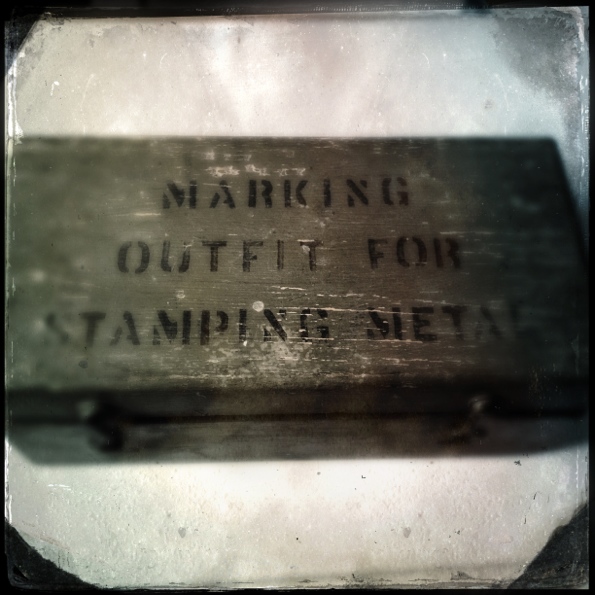
Identity Disk Stamping Kit
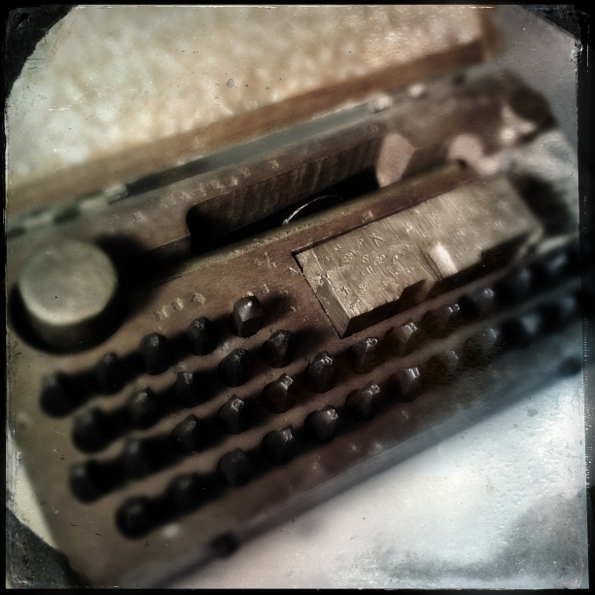

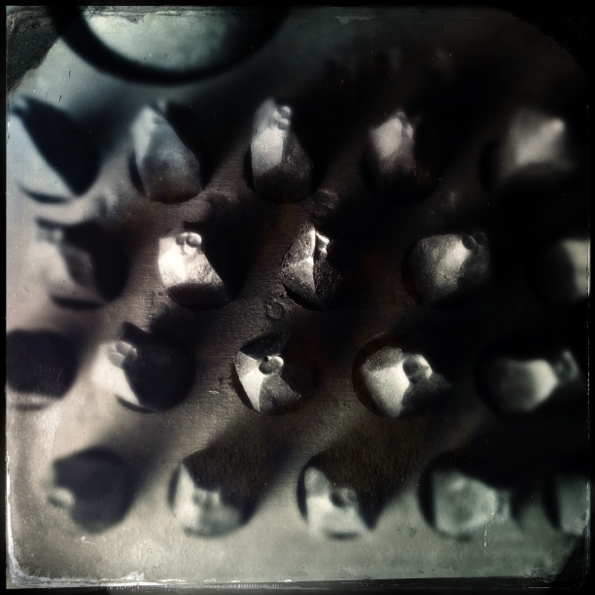
Here is a trench whistle. Scary thing, really. The sound of this whistle might have been the last thing many men heard before dying while going “over the top” of the trench in a hail of gunfire.
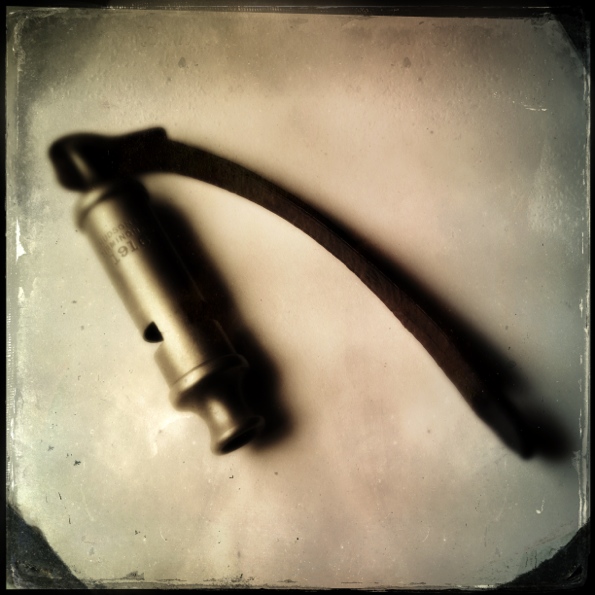
Trench Whistle
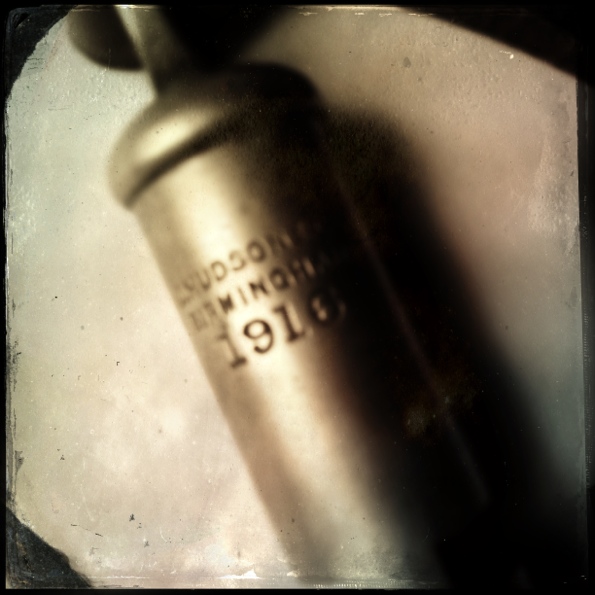
Below is a shell casing I found on Mount Cosna in Romania while filming the documentary Hill 579. Bullets were everwhere, easily seen, and were scattered all over the side of the mountain. One could still see the shell craters and trench lines overgrown with grass.
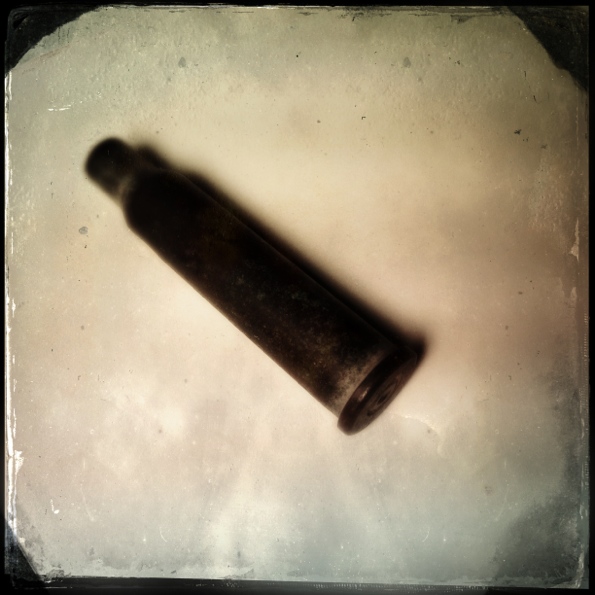
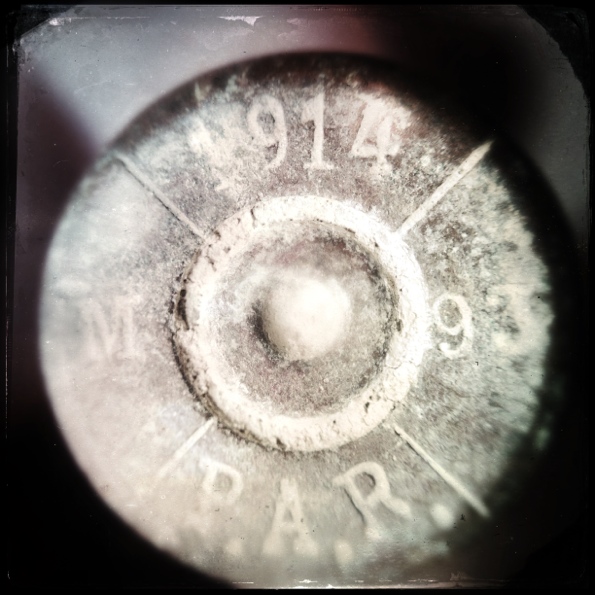
Here is a sort of petrified remainder of a trench wall from Flanders.

Two Iron Crosses from the First World War.

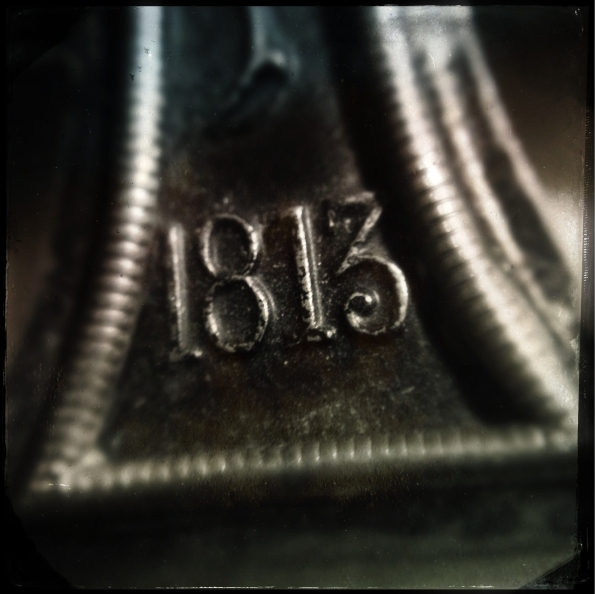 Charles Schulz sent this Snoopy in the trenches strip to me for my wedding years ago. One of my most prized pieces of original art. Talk about coming full circle. So many hours spent loving up on Snoopy and the Red Baron as a child. 🙂 I loved Schulz’s nods each year to Ernie Pyle, and for Veteran’s Day. Schulz was so woven into the fabric of our lives back than with all the television specials and toys and games and, of course, the strips.
Charles Schulz sent this Snoopy in the trenches strip to me for my wedding years ago. One of my most prized pieces of original art. Talk about coming full circle. So many hours spent loving up on Snoopy and the Red Baron as a child. 🙂 I loved Schulz’s nods each year to Ernie Pyle, and for Veteran’s Day. Schulz was so woven into the fabric of our lives back than with all the television specials and toys and games and, of course, the strips.
eBay is the ultimate bad/good place to find WWI ephemera. I try not to go anymore because it’s too easy to spend money. But there was a time when I haunted the place. Here are a couple of photographs I purchased from eBay. Some might wonder why one would want such images, but I see them as things that keep me straight, so to speak. There’s no way to glorify something like this, and this serves as a constant reminder of that for me.
I’ve also used eBay as a reference tool. It’s a great place to find imagery of the various costumes, buttons, hats, helmets, guns, ammo, etc. One could build a nice collection of reference materials from the auctions.
This book by Leroy Baldridge is a wonderful fragment of the war, being able to see through the eyes of an artist as he works observationally in the field. His drawings are very nice and to the point.

Leroy Baldridge
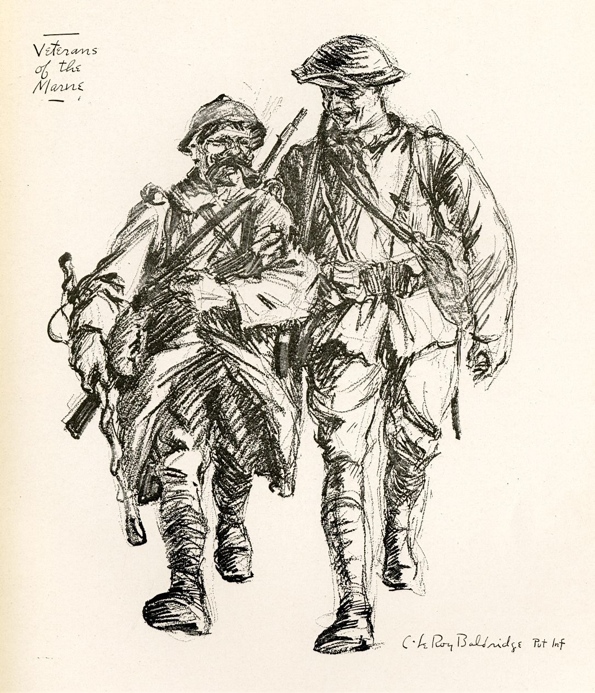

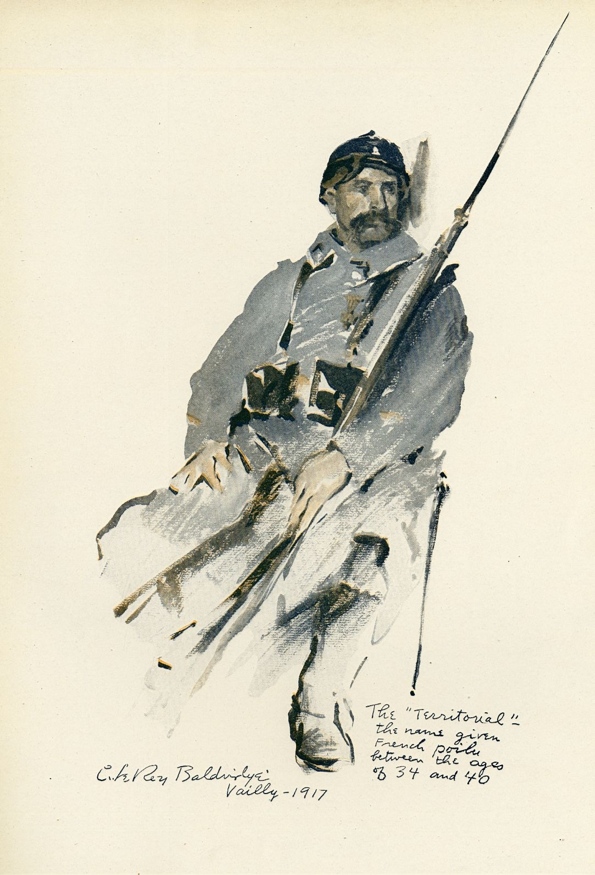 This book by Kerr Eby is slim but the work is poignant. Eby later was a combat artist in WWII and produced some of the most powerful images of the war in the Pacific.
This book by Kerr Eby is slim but the work is poignant. Eby later was a combat artist in WWII and produced some of the most powerful images of the war in the Pacific.
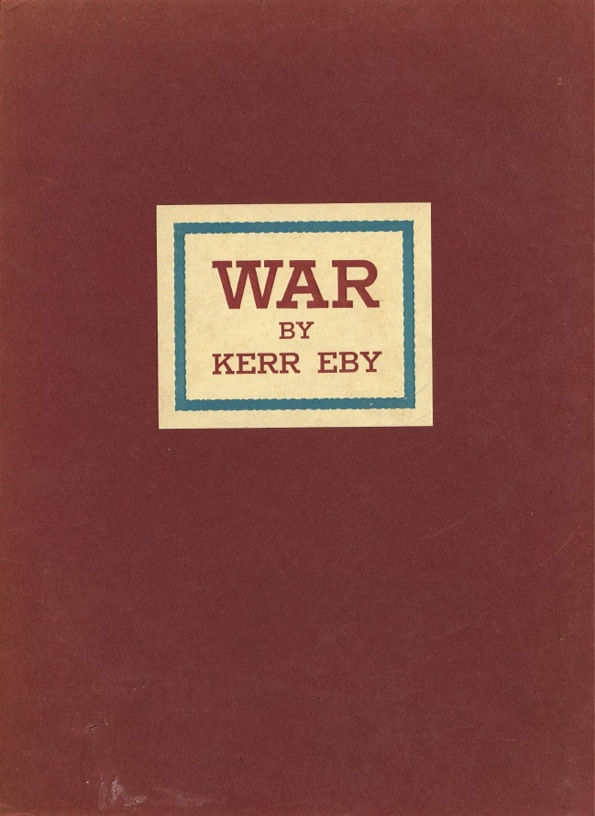

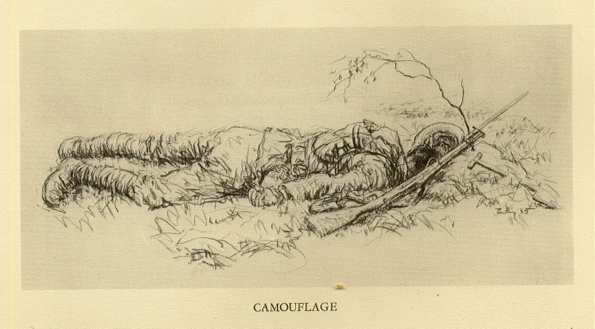
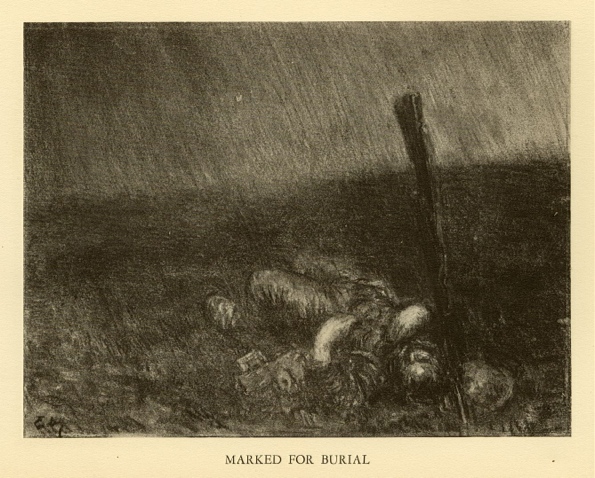
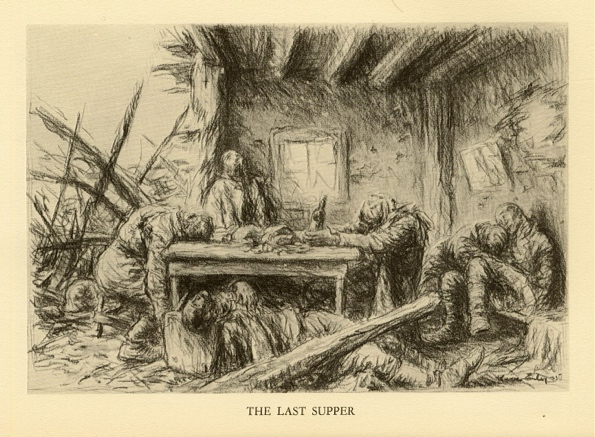
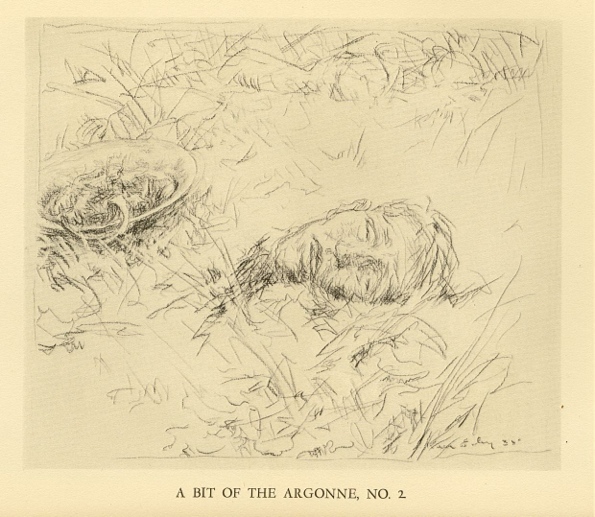 I’ve saved some of the best for last. One of my favorite magazines is the German humor weekly Simplicissimus. It was an oversized magazine that was chock full of some of the best graphic work anywhere. The artists were ahead of their time, and just about all of them were brilliant —I love the work of them all. In the pages of this groundbreaking publication one could find the work of Bruno Paul, Rudolf Wilke, Olaf Gulbransson, Theodore Heine, Wilhelm Shulz, Kathe Kollwitz, Theophile Steinlen, Jules Pascin, Heinrich Kley (rhymes with eye), and many, many more wonderful artists.
I’ve saved some of the best for last. One of my favorite magazines is the German humor weekly Simplicissimus. It was an oversized magazine that was chock full of some of the best graphic work anywhere. The artists were ahead of their time, and just about all of them were brilliant —I love the work of them all. In the pages of this groundbreaking publication one could find the work of Bruno Paul, Rudolf Wilke, Olaf Gulbransson, Theodore Heine, Wilhelm Shulz, Kathe Kollwitz, Theophile Steinlen, Jules Pascin, Heinrich Kley (rhymes with eye), and many, many more wonderful artists.
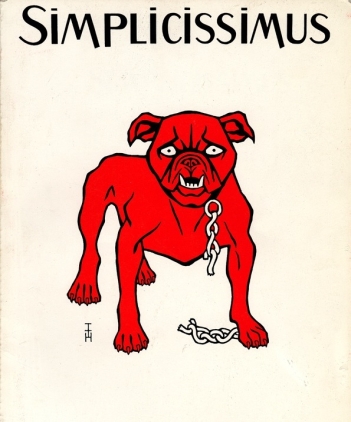
Theodore Heine created the mascot for the magazine, the red bulldog.
My hero from that publication is Eduard Thöny. He just hits me where I live, graphically. I love that he can go from something very observational and “realistic” to something cartoony. I also respond to his simple style and that he can jump around with various media and handle them all with equal aplomb. His charcoal drawings are powerful, but so are his black and white pieces.

Eduard Thöny 1941
I’ve been lucky enough to track down many of the separate portfolios that were published at the time, as well as collected bound volumes of the original Simpliicissimus magazines. Thöny in particular focused on the military and his work during WWI is exceptional. Before I show you the work from Simplicissimus here’s a little book I found from WWI on the German soldiers’ slang. Very handy thing to find as it provides wonderful insight into the slang of the German soldiers, and even more cool because Thöny illustrated it!
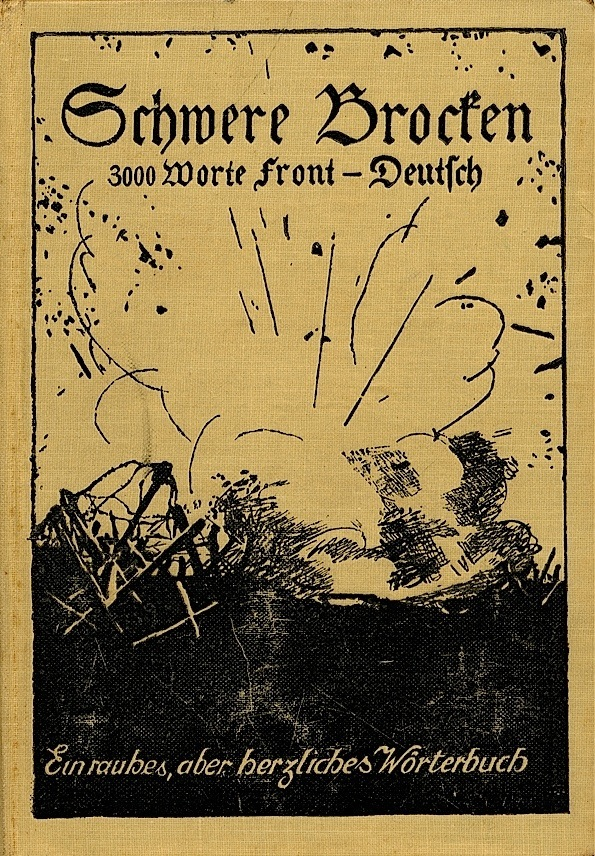
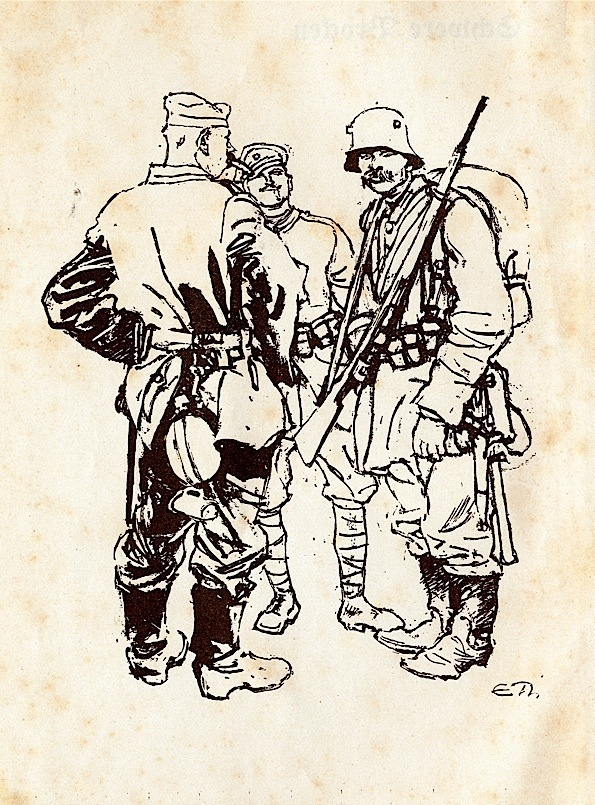
Eduard Thöny
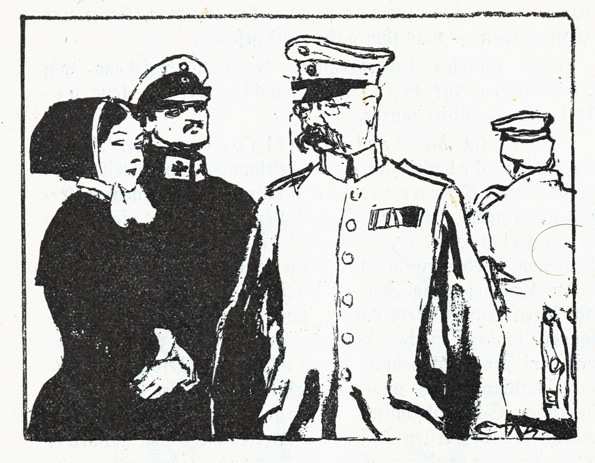
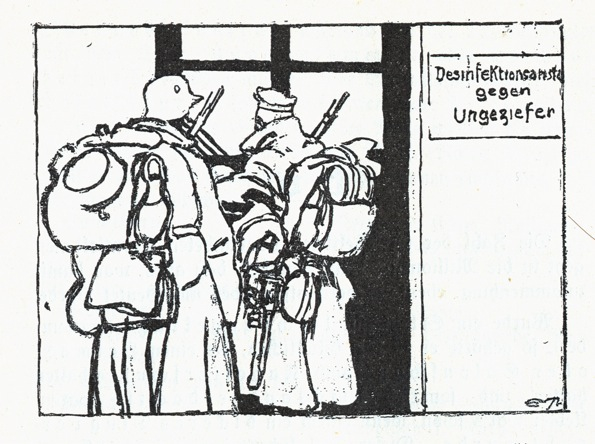

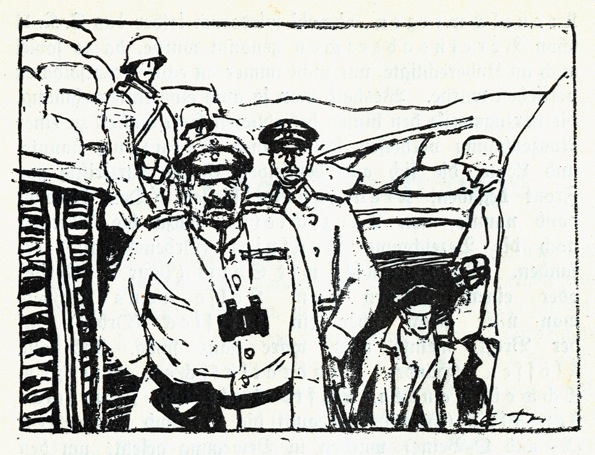
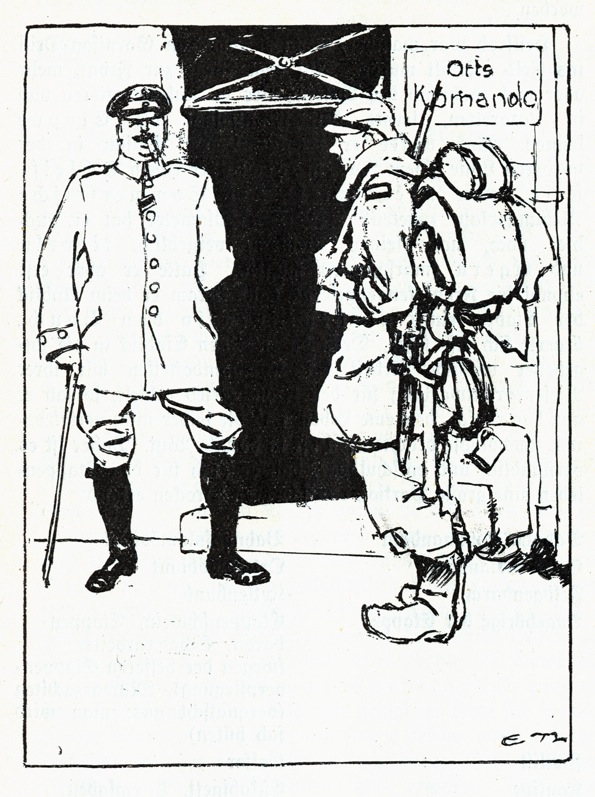
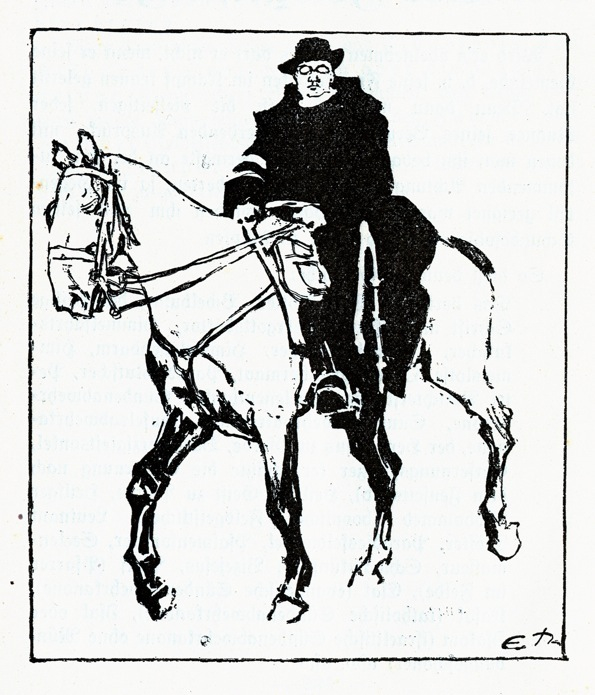
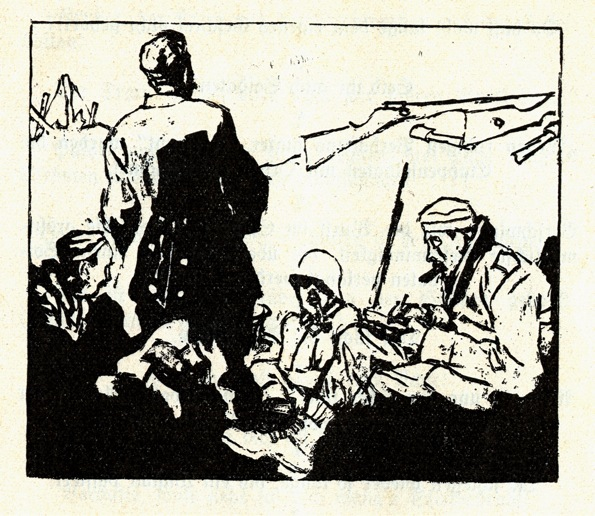
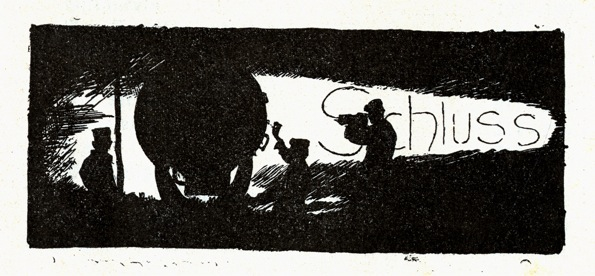
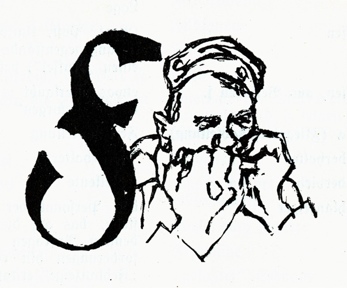
Thöny Chapter Heading
The work below is some of Thöny’s work for Simplicissimus during the First World War.
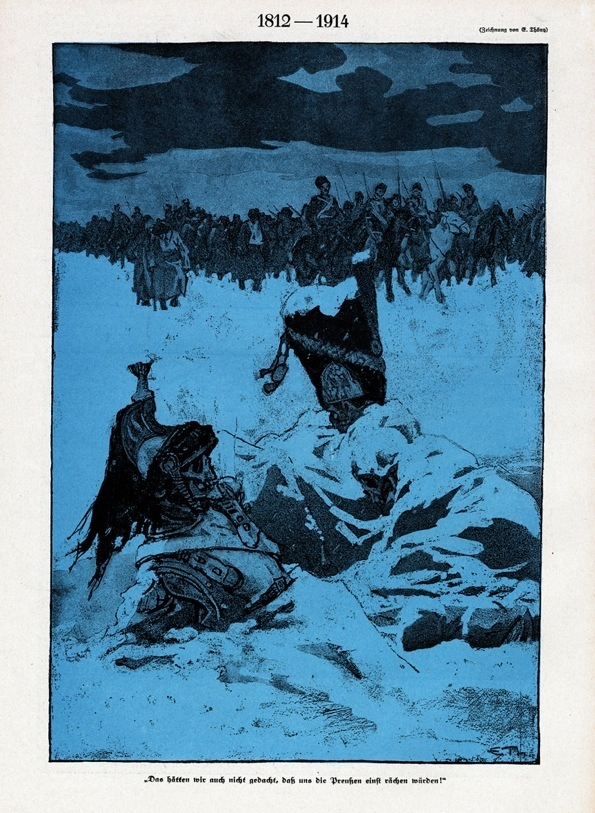
Thöny piece from Simplicissimus
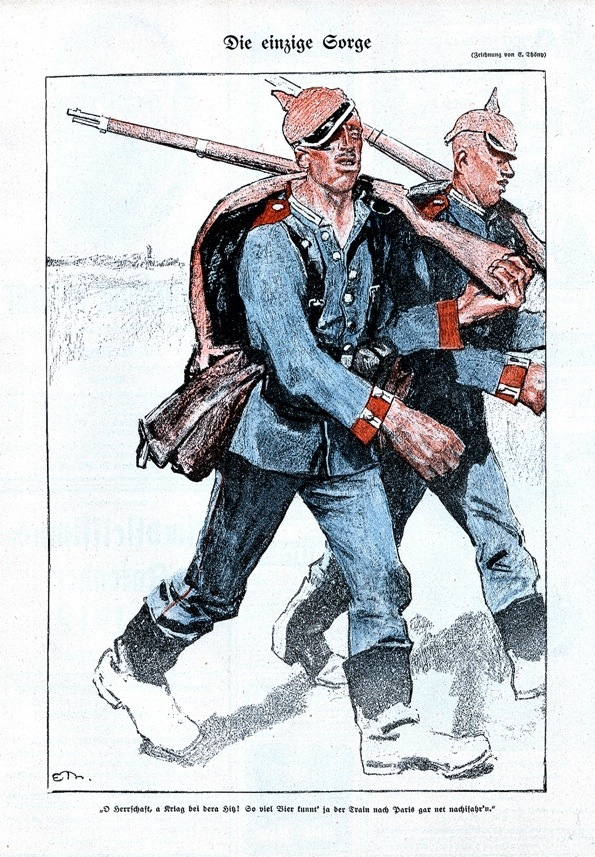

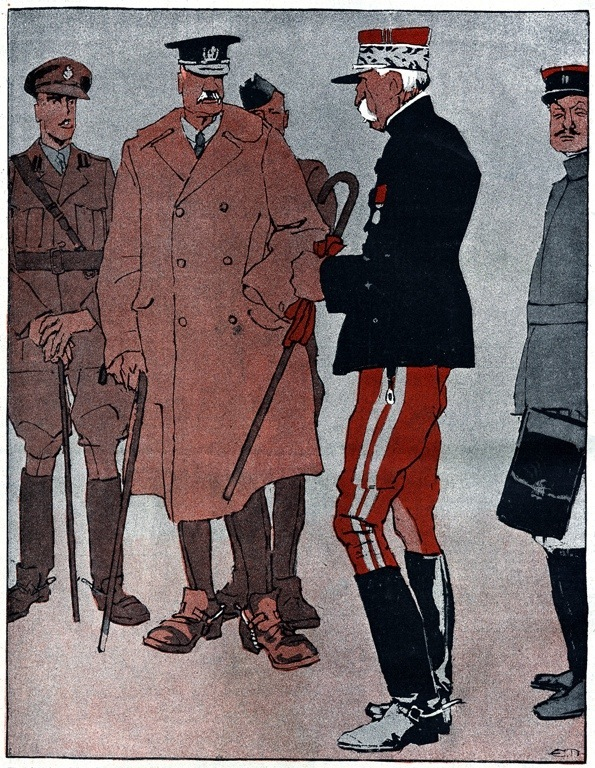
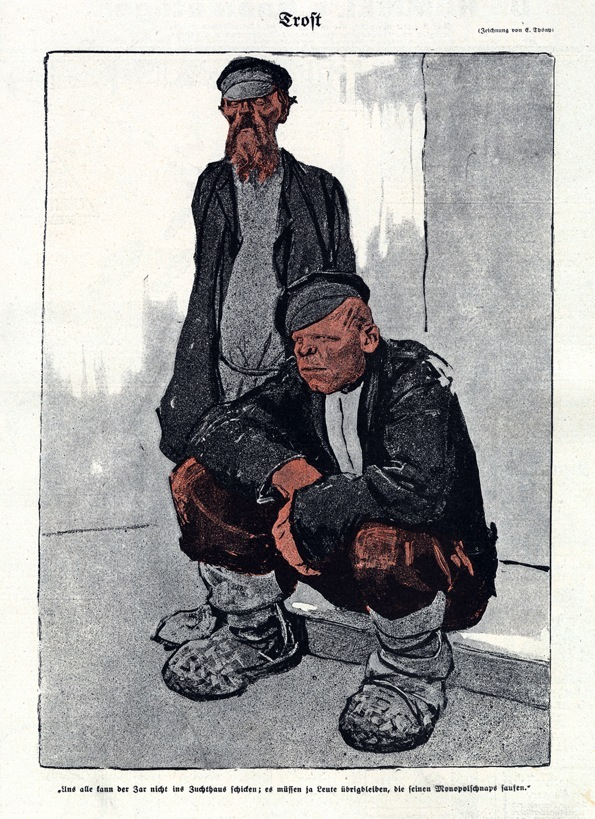
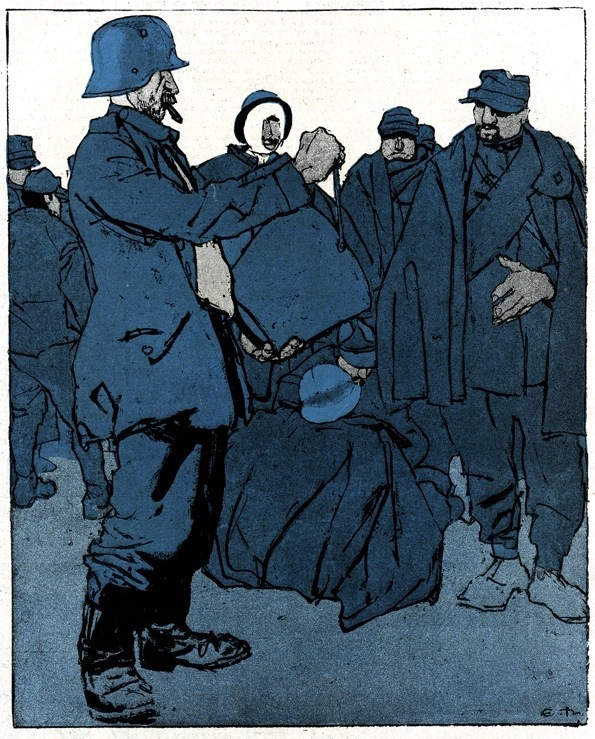

Thöny Charcoal
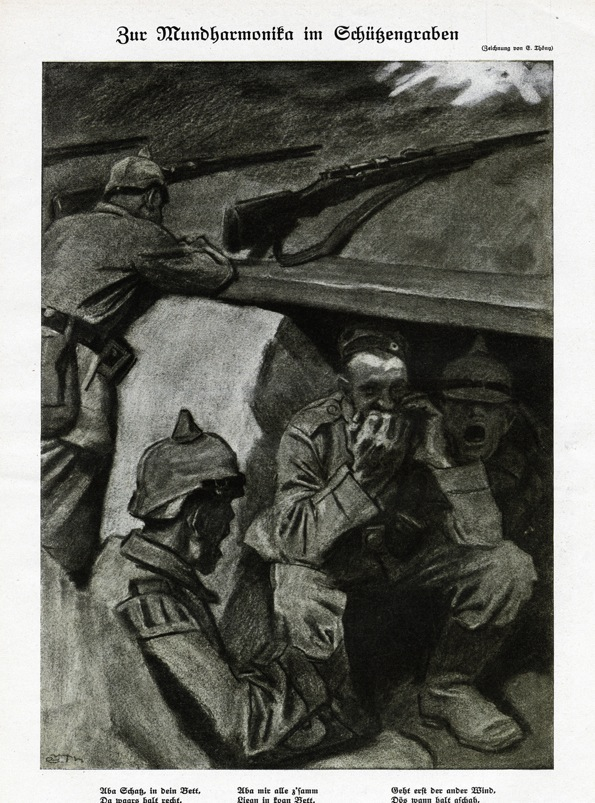
Thöny Charcoal

Thöny Charcoal
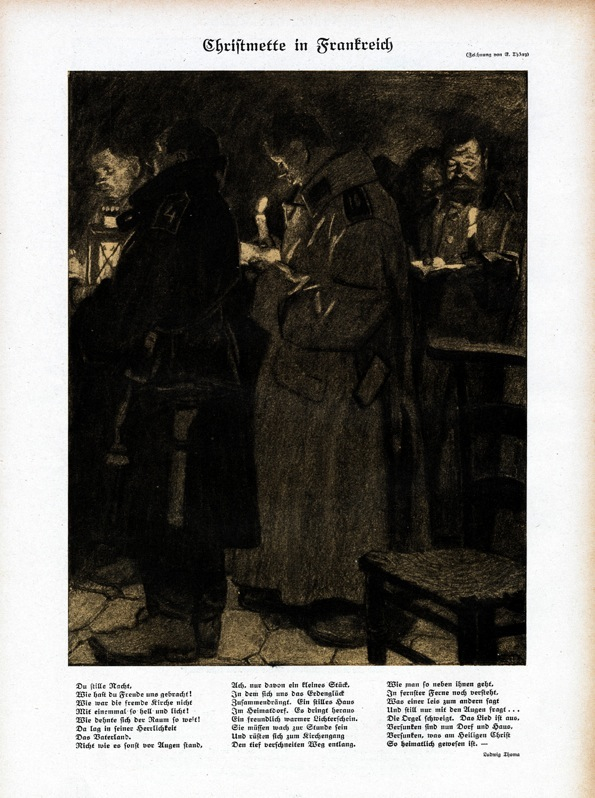
Thöny Charcoal
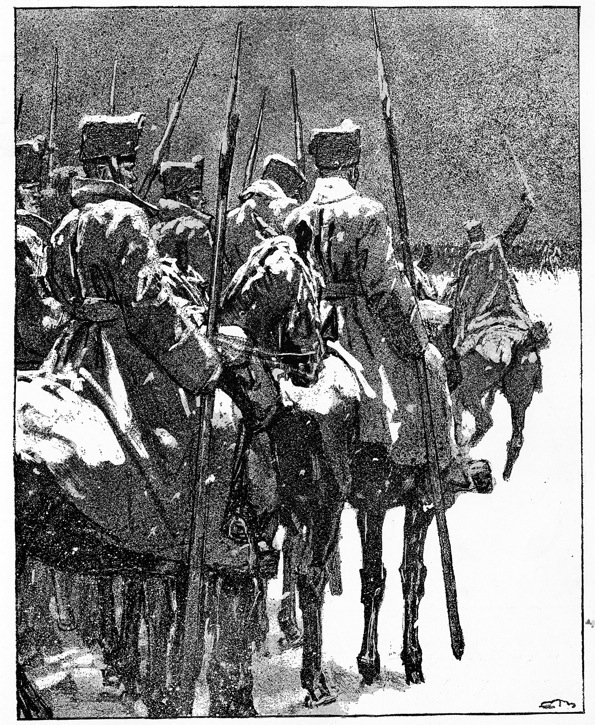

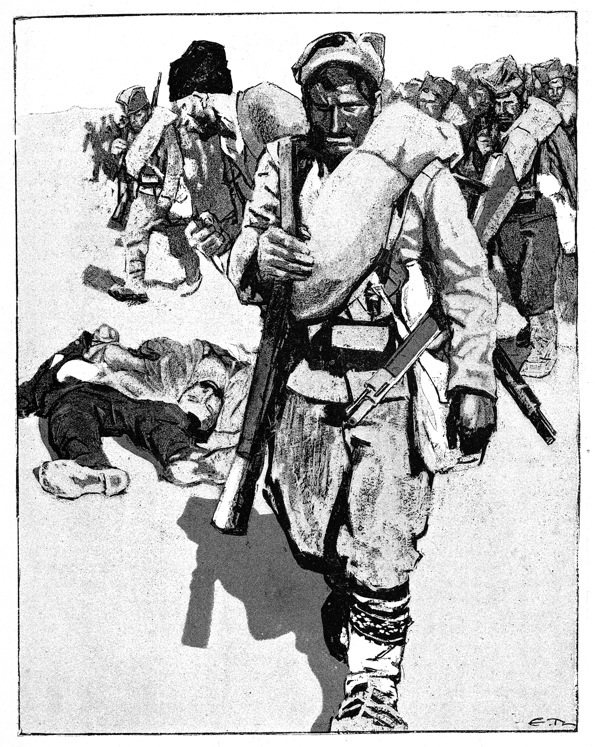
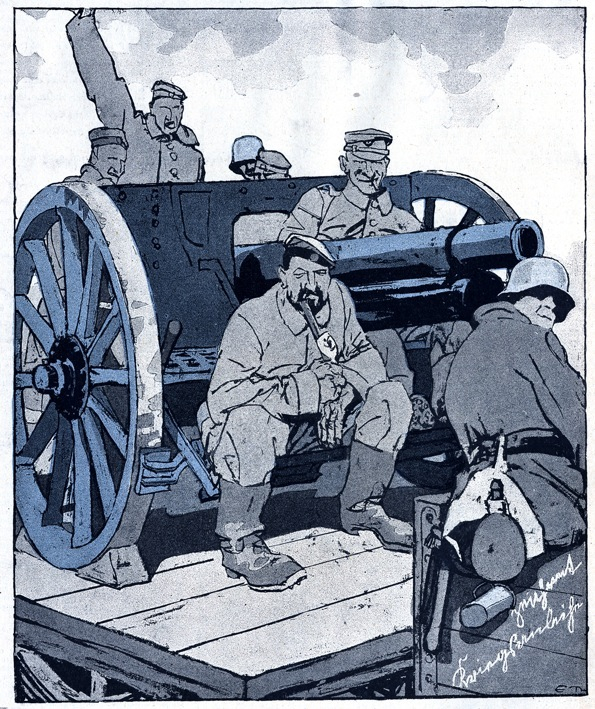
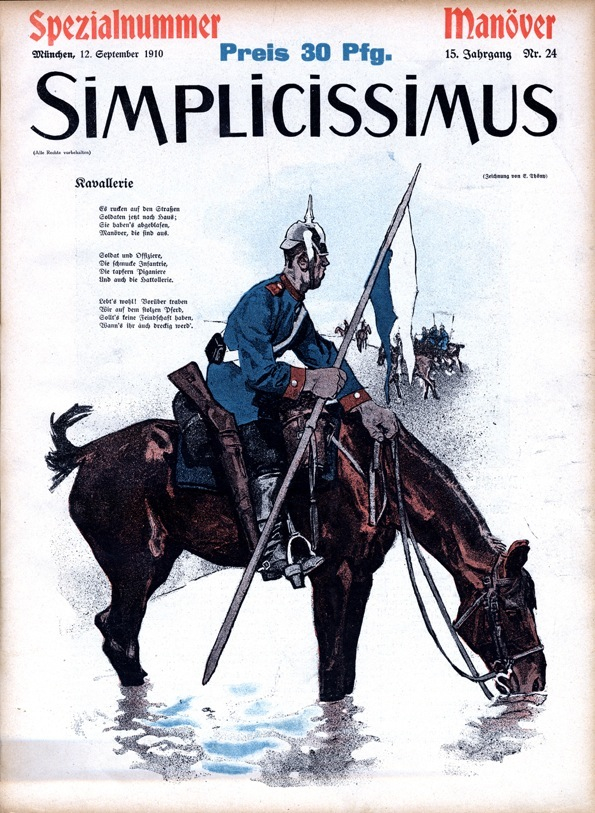 Basically
Basically
I’ll just have to do a whole post on Thöny at some point.
Below are images from other artists in Simplicissimus from the War years.
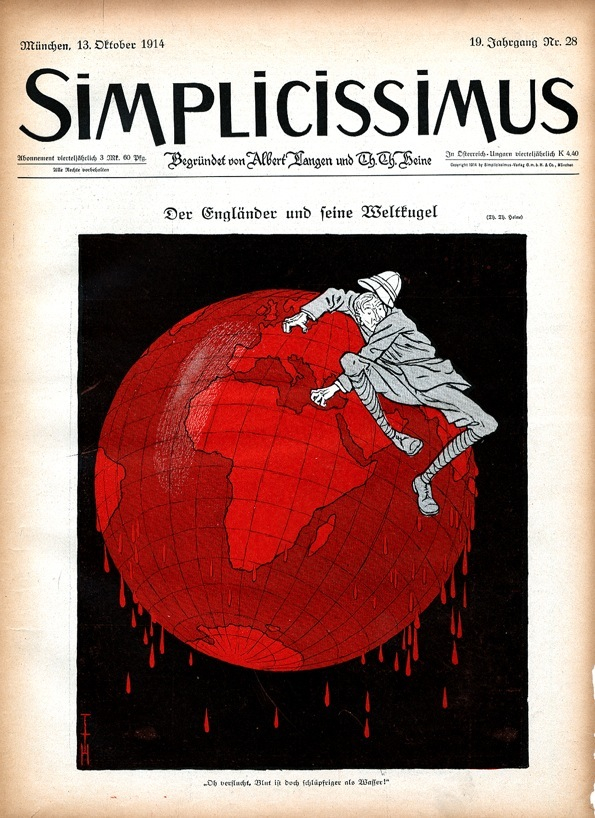
Theodore Heine
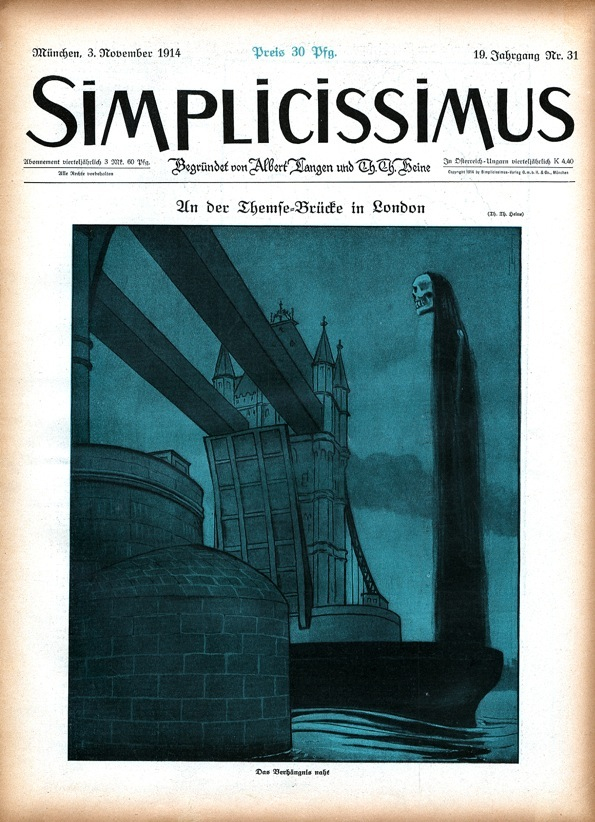
Theodore Heine

Olaf Gulbransson
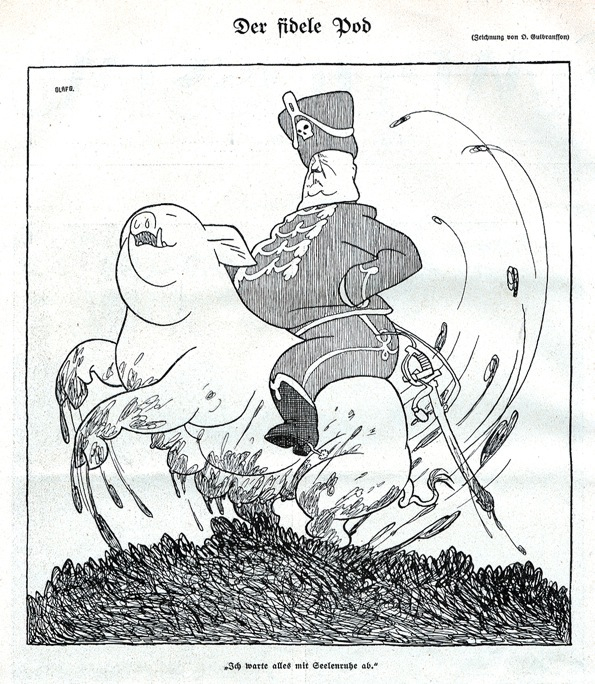
Olaf Gulbransson
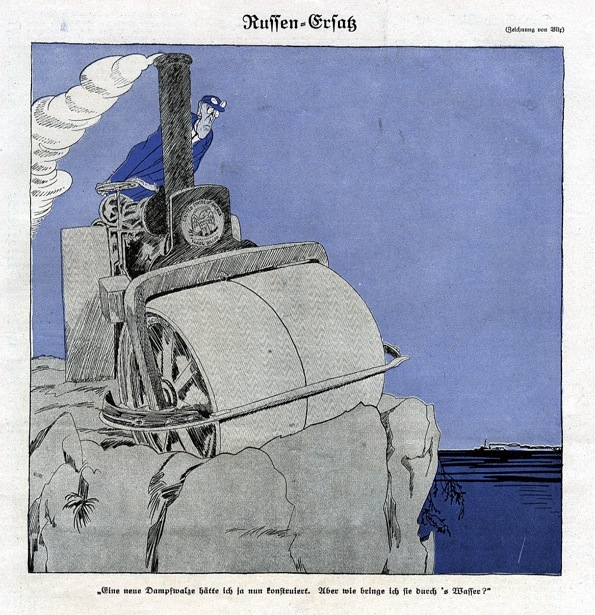
Ragnvald Blix
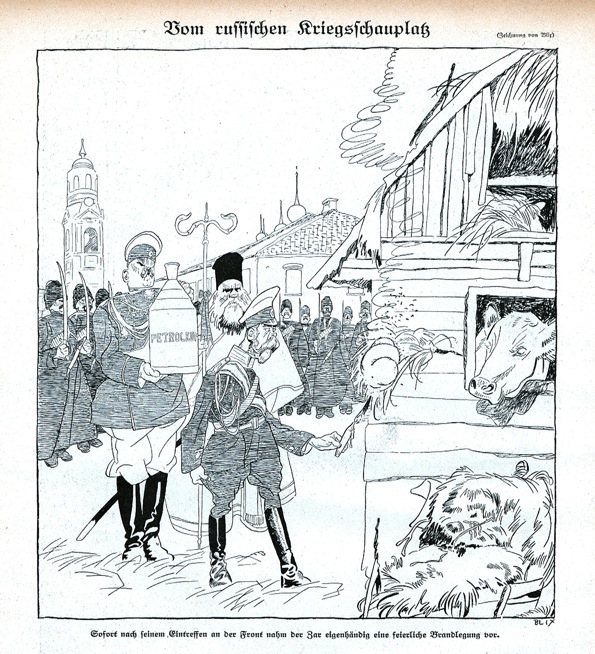
Ragnvald Blix
“Better Things: The Life and Choices of Jeffrey Catherine Jones”
Please take the time to check out the Indiegogo campaign for the documentary film by Maria Cabardo, “Better Things: The Life and Choices of Jeffrey Catherine Jones”. There’s 27 days left in the campaign and the film is really a wonderful insight into the life of painter Jeffrey Jones.
“Better Things: The Life and Choices of Jeffrey Catherine Jones”
If you’ve read much on my blog then you know what a profound influence Jeff was on my life and work.
There’s a link with a small clip of Jeff and I discussing landscape painting in the gallery section of the campaign:
We’re the third clip on the top row.
I hope you’ll support this film!
George

